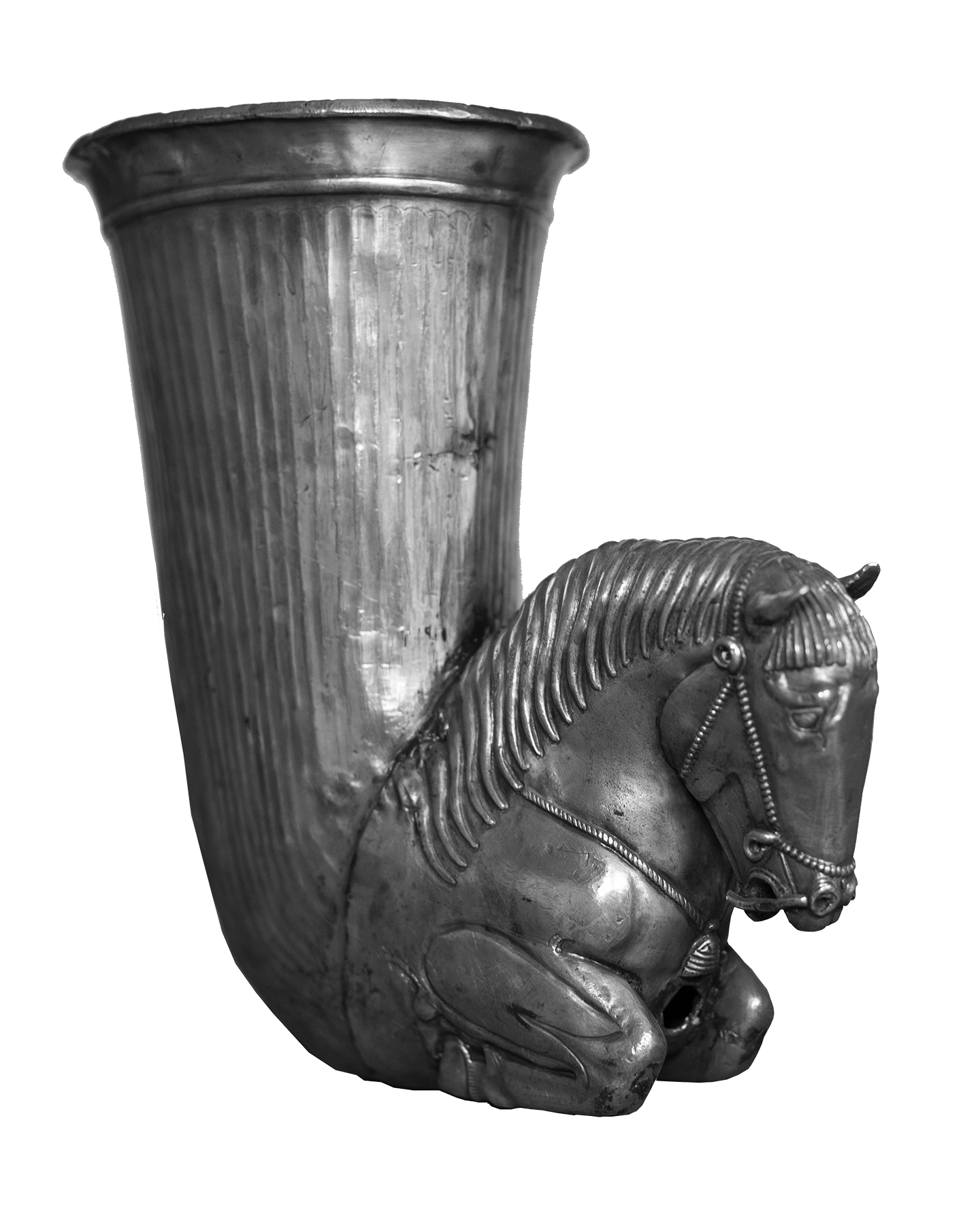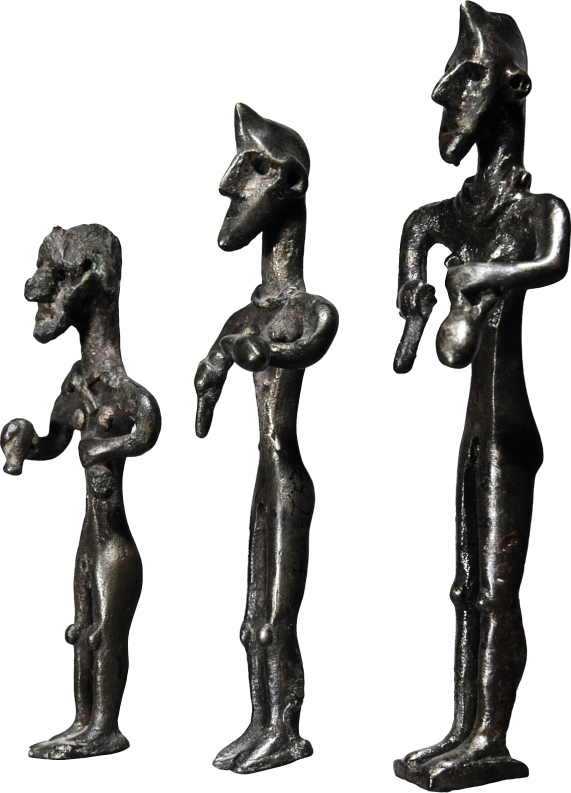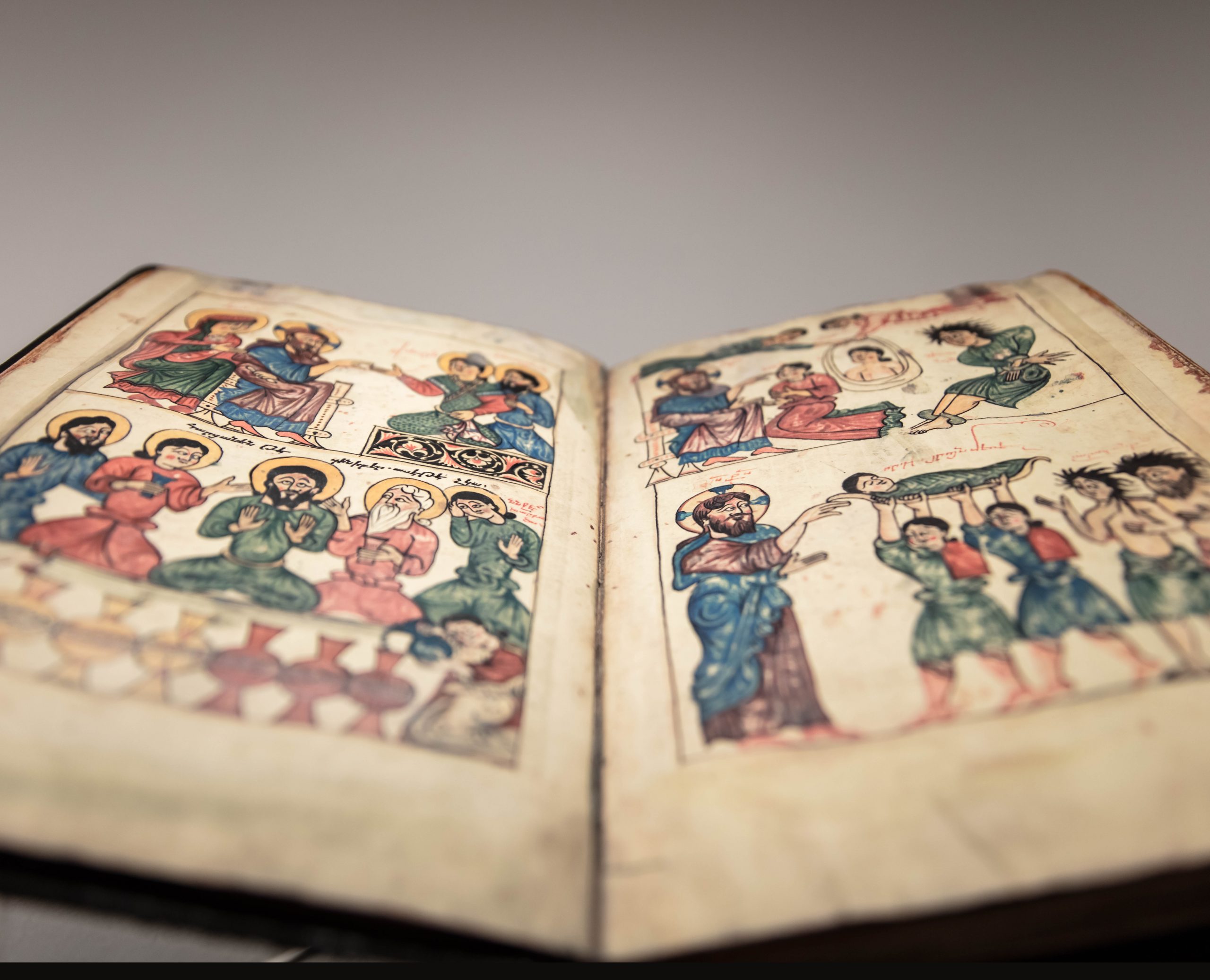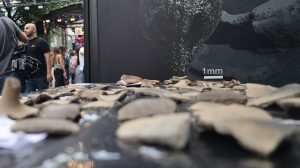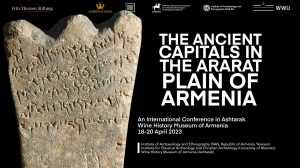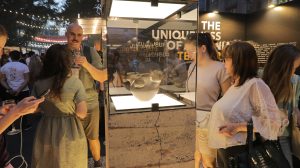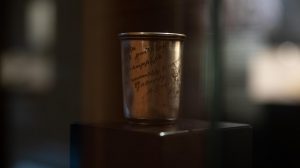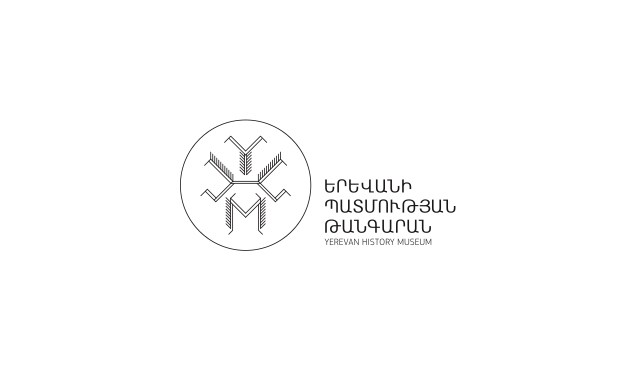ABOUT MUSEUM
The idea to present a comprehensively researched history of Armenian winemaking, rich in centuries-old traditions of growing grapes and making wine, has matured over the years. Archaeological monuments, bibliographic, and ethnographic data became the basis for creating the Museum of Winemaking History in Armenia.
Here, the development of viticulture and winemaking in the Armenian Highlands is represented not only by artifacts and interpretation but also by innovative, interactive solutions. Such a structure of the museum allows the visitors to get an exact idea of millennium-old Armenian culture as a whole.
The main exhibition hall, located at the level of underground basalt rocks with a depth of 8 meters, presents the chronological stages of the development of wine in Armenia in detail, as well as the relationship of wine with various areas of Armenian history and culture.
Events
Prebook Info

Art & Science

The Historian and His Era.
Faustus Buzand’s History of Armenia (5th century) is not only one of the earliest monuments of Armenian historiography but also a multifaceted compendium encompassing memoiristic narratives, Christian moral teachings, reflections on social conduct, and spiritual values. The work covers the political and religious events of the latter half of the 4th century—from the reign of King Trdat III the Great to the times of Kings Pap and Varazdat. This period was crucial for the Armenian people: pagan polytheism was ultimately giving way to Christianity, while the Armenian Kingdom stood between the Roman and Persian empires, facing constant political and military pressures.
The image of wine, frequently mentioned throughout Faustus Buzand’s narrative, becomes a symbolic axis reflecting the transition from the pagan world of feasting and sensual pleasure to the Christian reality of asceticism and sanctification. In his work, wine is no longer a mere material beverage; it assumes moral, theological, and even psychological dimensions, manifesting differently in the behavior of various characters.
Buzand’s history is written in a vivid, rhetorically rich language interwoven with dialogues. He is among the first Armenian historians to portray his characters with psychological depth, revealing their crises of conscience, religious doubts, and trials of faith. The recurring theme of wine in his narrative serves as one of the central expressions of this psychological drama—wine becomes both a symbol of temptation and a sign of salvation.
Thus, Faustus Buzand’s work stands as a record of a spiritual and moral journey, in which the material pleasures of pagan worldview gradually yield to Christian wisdom. His History of Armenia is at once a historical document, moral discourse, and theological meditation, reflecting the spiritual struggle of an era in which a new, Christian Armenia was taking shape.
Wine as a Symbol of Feasting and Heroic Glory
Among Buzand’s epic and vividly narrated episodes stands the story of General Mushegh Mamikonian, a noble figure embodying moral virtue and heroic magnanimity. When Mushegh captures Persian noblewomen, he neither violates their dignity nor allows his soldiers to do so; instead, he returns them unharmed and honored to King Shapur.
According to Buzand, Shapur’s gesture of gratitude through the offering of a wine cup becomes a symbol of praise for the noble hero, national valor, and moral virtue:
“In those days Mushegh had a white horse, and when King Shapur of Persia took the cup of wine in his hand and feasted with his men, he would say: ‘Let the rider of the white horse drink!’ And he had a cup engraved with the image of Mushegh on his white steed, and during feasts he would place that cup before him and repeat the words: ‘Let the rider of the white horse drink!’” (p. 233).
In this account, wine-drinking transcends mere festivity—it becomes a ritual of remembrance, loyalty, and heroism, where material pleasure gives way to symbolic meaning. Wine here is associated with national identity, ethical ideals, and ethnographic continuity, transforming the act of drinking into a medium of cultural and moral communication.
Arshak II, His Chamberlain Drastamat, and Wine
Equally remarkable are Buzand’s accounts of King Arshak II and his chamberlain Drastamat, reflecting the complex interplay of hierarchy, politics, and spirituality. King Shapur II of Persia deceitfully captures Arshak, despite having sworn the holiest Zoroastrian oath. To test Arshak’s faith, Shapur orders two camels’ loads of Armenian soil to be spread across his palace floor. Arshak walks upon it, symbolically asserting his spiritual freedom and national identity even in captivity—an act that leads to his imprisonment.
Later, Drastamat, distinguished for his valor in past wars, requests permission to visit Arshak “to bring him wine and comfort him” (pp. 248–249). Here, wine becomes not just a drink, but a token of royal honor and spiritual solace, capable of soothing the captive king’s suffering.
When Arshak drinks, becomes intoxicated, and reflects upon his fate—“Woe is me, Arshak; from where have I fallen, and into what condition have I come!” (p. 250)—wine turns into a medium of emotional revelation, blending remembrance, sorrow, and inner struggle. Buzand transforms wine into an instrument of both consolation and destruction, illuminating the tension between bodily indulgence and spiritual anguish.
In this sense, wine assumes a dual role—both a physical pleasure and a catalyst for contemplation—revealing the inner complexity of the king’s psyche and his spiritual conflict within the confines of captivity.
Wine as a Symbol of Faith
A particularly profound episode describes a devout monk who initially doubts the divine power of wine:
“He could not believe that when wine is brought to the holy altar and distributed by the priest, it truly becomes the blood of the Son of God” (p. 263).
During the Eucharist, however, he beholds a vision:
“Christ descended upon the altar, opened the wound in His side made by the spear, and from it blood dripped into the chalice on the altar” (pp. 204–205).
Here, wine attains its highest, sacred significance, being identified with the blood of Christ. Belief or disbelief becomes the test of faith, the measure of spiritual mission and inner purity. Buzand thus presents wine as a holy symbol uniting the material and the spiritual, manifesting divine presence through human experience.
This understanding transcends ritual and materiality—wine becomes a condensed emblem of faith, spiritual vision, and divine presence, where every act of belief is a step toward inner sanctification and comprehension of divine order.
Wine as an Instrument of Death and Betrayal
Wine reaches its darkest and most complex symbolism in the accounts of King Pap and King Varazdat.
In the first, during a banquet, King Pap is beheaded with a cup of wine in his hand:
“It is written that when they struck Pap’s neck, his blood mingled with the wine” (pp. 271–272).
In the second, King Varazdat, fearing the authority of General Mushegh Mamikonian, plots to intoxicate and kill him:
“Varazdat planned to murder the general; he invited Mushegh to a feast and placed abundant wine upon the tables to make him drunk” (p. 275).
Mushegh, however, foils the plot.
In both instances, wine becomes an agent of death and treachery—the mingling of blood and wine symbolizes the unity of sin, violence, and mortality. The banquet, once a scene of fellowship, turns into a prelude to death. Wine thus serves as an instrument of chaos and moral corruption, reflecting the interplay of human guilt and the cruelty of power.
Conclusion
In Faustus Buzand’s narratives, wine appears as a multilayered symbol encompassing the spiritual, moral, social, and political dimensions of human existence. In certain episodes, it signifies blasphemy and sin, where physical pleasure opposes spiritual discipline. In others, as in the stories of Mushegh Mamikonian and King Arshak, wine becomes a symbol of loyalty, heroism, and moral steadfastness.
At the same time, the accounts of Pap and Varazdat reveal its darker side—wine as an instrument of conspiracy, death, and moral decay.
Ultimately, in Buzand’s vision, wine is more than a drink: it is a medium through which human behavior, faith, memory, and spirituality are revealed and materialized. Its layered meanings testify to the theological, social, and psychological complexity of the age—it may be sacred or cursed, redemptive or destructive, joyous or deadly. Through this dialectic, Buzand invites the reader to contemplate the intricate relationship between body and spirit, matter and faith, pleasure and transcendence.
[gallery columns="2" ids="2724,2727"]

Sasna Tsrer (“Daredevils of Sassoun”) is the national epic of the Armenian people. Transmitted through centuries of oral tradition, it was committed to writing only in the nineteenth century. The nucleus of the epic, however, took shape in the early medieval period (8th–10th centuries), during the Armenians’ struggle against Arab domination. It is a heroic and liberatory song-narrative in which the principal figures—Sanasar and Baghdasar, Great Mher, David of Sassoun, and Little Mher—embody the strength, valor, and indomitable will of the Armenian nation in defense of its homeland.
The epic is divided into four cycles: the tales of Sanasar and Baghdasar, of Great Mher, of David, and of Little Mher. These cycles are linked by genealogy and by the overarching theme of unceasing struggle. Numerous variants of the tradition have been preserved in different layers of folklore and were first systematically recorded in 1873 by Garegin Srvandztiants. To date, more than 160 versions are known, all rich in linguistic, mythological, and historical elements.
What distinguishes Sasna Tsrer is not only its heroic plots and depictions of military feats, but also its rich cultural dimensions. Within this context, wine occupies a prominent place, appearing in some of the most significant episodes and serving diverse functions. Wine is represented both as a sacred medium of oath-taking, through which heroes affirm the inviolability of their word and deed, and as a vital element of festivity, uniting the community and becoming an instrument of social and ritual communion. At the same time, wine can also function as a treacherous device, employed to deceive, weaken, or ensnare heroes.
For instance, when Melik advances against Sassoun with his army, Zenov Hovan and Tsran Vergen, fearful and unwilling to fight, decide to keep David from joining the battle:
“Hovan, we cannot fight.
Let us invite David, let us feast.
Let us trick him, make him drunk,
Then seize our women and daughters,
Give Melik gold and silver,
Pass beneath his sword—
Perhaps Melik will have mercy on us.” (p. 221)
“David,
If you drink this copper vessel of wine, you are truly Mher’s son;
If not, you are illegitimate.”
“Uncle,” said David, “fill it, let us see.”
His uncle filled the vessel to the brim.
David took it, raised it to his lips,
Drank and drank until he emptied it.
The vessel fell to the ground, split open.
David became so intoxicated—he lay down and slept. (p. 221)
Such episodes attest that in Sasna Tsrer wine is never reduced to the status of an ordinary beverage. Rather, it becomes a multilayered symbol reflecting the Armenians’ traditional conceptions of life, death, faith, and trial. Wine bears simultaneously religious, moral, and social meanings: it can be sacred and life-giving, or perilous and destructive, depending on the circumstances of its use.
Closely related to the symbolism of wine is that of the pomegranate. In Armenian culture, the pomegranate is a preeminent emblem of fertility, abundance, and continuity of life. With its multitude of seeds, it signifies both familial fecundity and the vitality of the nation. For this reason, in Sasna Tsrer wine is most often described specifically as pomegranate wine—not merely a drink, but a symbol of strength, vital energy, and divine blessing. For the heroes it becomes a source of power; for the people, it is the embodiment of the protective spirit of the homeland.
The pomegranate also enjoys broad representation in Armenian art and architecture. It appears in church sculpture, on khachkars (cross-stones), and in the illuminations of medieval manuscripts as a sign of celestial blessing and eternity. In Armenian custom, the fruit plays a role in wedding rituals, linked to the ideas of new life, healthy progeny, and family stability. Thus, both the pomegranate and pomegranate wine transcend material value, functioning as spiritual symbols that unite faith, culture, and national identity.
Wine in the Life of Sanasar and Baghdasar
In the opening episodes of the epic, wine appears around the figures of Sanasar and Baghdasar not merely as a beverage but as a fundamental element in the formula of sacred oath. Before building his new home, Sanasar declares:
“Bread and wine, the Lord’s creature.
Wherever the source of water shall be,
Let us go and build our house there,
There, upon the water, let us establish our dwelling” (p. 25).
Through this formula, he affirms the divinely sanctioned character of his undertaking. The same invocation is uttered in a moment of mortal danger, when his life hangs by a thread:
“The Caliph drew his dagger,
Pulled it to cut his throat, to sacrifice him.
Sanasar saw that indeed his neck was about to be cut.
He said: ‘Oh bread and wine, the Lord’s creature’” (p. 46).
This recurring expression demonstrates that wine, for Sanasar, is not merely sustenance; rather, at the boundary between life and death it functions as a sign of divine protection and moral steadfastness. At the same time, within the epic wine acquires a communal and festive role. Following their victory, Sanasar and Baghdasar organize a banquet:
“They placed the pomegranate wine upon the table.
They drank the red wine before their eyes,
Rejoiced, and held a feast” (p. 47).
Here, wine serves not only as a means of joy and celebration but also as part of the collective memory of the community: it symbolizes the consolidation of victory and the spirit of brotherhood and unity. Yet the same wine can also become, as noted above, an instrument of deceit and treachery. Seeking to neutralize Baghdasar, the Caliph commands:
“Come, load seven camel-burdens of sour wine,
Carry them to the Mountain of the Fool.
Tomorrow I shall deceive Baghdasar, bring him there,
Give him wine to drink,
Make him drunk, and kill him” (p. 49).
Thus, from the earliest strata of the epic, wine assumes a dual and contradictory character: on the one hand, it is a sign of sacred oath and divine blessing; on the other, it can be transformed into an instrument of deception and death. This duality reveals the complexity of wine’s symbolic role in Sasna Tsrer, where every object possesses both life-giving and destructive potential—depending on circumstances and on the path chosen by the heroes.
Wine in the Story of Great Mher
In the life of Great Mher, wine also plays a significant role. During his battle with the lion, he turns to God, repeating the well-known invocation:
“Bread and wine, the Lord’s creature” (p. 106).
In the description of Mher’s wedding, wine is placed on the table, which underscores its ceremonial significance (p. 114). Yet in Mher’s story, wine also acquires a dangerous meaning: when Ismil Khatun learns of Mher’s return to Sassoun, she makes him drink wine aged seven years. As a result, he falls into the trap set by Ismil and remains captive there for seven years:
“May your house be ruined—
Look, is there not seven years’ wine?
He will soon return, hurry, quickly!
The servants arose, brought the seven years’ wine,
Gave it to Mher as he sat upon his horse. Mher drank.
When Mher drank, he clasped his forehead” (p. 122).
Later, when Mher dies, the people of Sassoun mourn for seven years, after which they begin once again to drink wine and celebrate. Only Uncle Toros refuses:
“Shall I sit here and make merry,
While David, son of Msra Melik, is held captive?
Is it not a shame for us…
Bread and wine, the Lord’s creature.
Until I bring back that orphan,
I shall not raise this cup to my lips” (pp. 152–153).
In this episode, wine primarily symbolizes the overcoming of grief: after seven years of mourning, the Sassountsis once again gather around the table, bring forth wine, drink, and begin to rejoice. This ritual marks the continuation of life, while simultaneously commemorating and honoring past losses. Wine serves both as a means of remembrance and glorification of Mher’s deeds, and as a way for the community to restore moral and social order. At the same time, it becomes a test of loyalty and prudence, for the heroes must either partake or abstain from drinking—thus demonstrating fidelity to their will and dignity.
This duality—the coexistence of joy and trial—renders wine one of the central symbols of the epic, underscoring the notion that life and the memory of the past are inextricably bound together.
Wine in the Character of Sasuntsi Davit
In Davit’s story, wine and bread repeatedly appear as constant elements of oath-taking, through which he affirms the unbreakable nature of his word and his connection to divine providence:
“If you now reveal the location of Tsovasari, speak!
If not, ha! Bread and wine, you beast,
I will strike your face, twist your neck” (p. 188).
Davit’s heroic strength and way of life are in many episodes directly associated with wine; he is depicted at feasts and victory celebrations, consuming pomegranate wine aged seven years (p. 200).
On the other hand, wine can again become an instrument of treachery and danger. His enemies make Davit drink seven measures of bronze wine, and intoxicated, he falls asleep, becoming the victim of deception:
“His uncle filled the bronze to the brim.
Davit took it, brought it to his mouth,
Drank, drank! The floor opened up.
The bronze fell to the ground, pierced.
Davit became so drunk—he lay down, slept” (p. 221).
This episode emphasizes that wine not only unites and has a life-giving effect, but can also create vulnerability, provide an occasion for temptation, and give rise to threats.
Thus, in Davit’s story, wine acquires a dual and ambivalent meaning, simultaneously symbolizing life, strength, and celebration, but also deceit and danger, which underscores the depth and complexity of the symbolic system of Sasna Tsrer.
Wine in the Final Trials of Little Mher
The final hero of the epic, Little Mher, also attaches great significance to wine. After the incident with his father and the curse, he gathers his companions and drinks pomegranate wine aged seven years (p. 290), which becomes not only a means of joy and unity but also a symbolic marking and perception of his destiny. Here, wine emphasizes the hero’s individual strength and determination, demonstrating that his actions are closely connected both to fate and to a sacred status.
At the moment of ultimate danger, Little Mher again employs the well-known formula associated with wine:
“Remember my bread and wine, you beast,
Maruta, Most High God” (p. 318).
This attests that wine continues to carry the meaning of divine protection and spiritual significance in his life. In this episode, wine becomes both a marker of a significant event and a medium for strengthening the symbolic spirit, highlighting that in Sasna Tsrer wine is not merely an everyday object but also sacred and fate-bound.
Thus, in the epic, wine functions as a multilayered symbol, underscoring both individual and communal social and spiritual perceptions. On one hand, wine is presented as a sign of faith, oath-taking, and divine protection, indicating that objects in the epic are not limited to their material, physical sense but acquire spiritual, moral, and symbolic value. Heroes, by using wine in their promises or in fate-bound situations (“Bread and wine, you beast”, pp. 25, 46, 318), affirm their sovereignty, fidelity, and connection with divine providence.
On the other hand, wine is also depicted in the epic as a social and cultural necessity; it is inseparable from feasts, weddings, and victory celebrations, where heroes demonstrate unity and reinforce the community’s identity and traditions (pp. 47, 114, 153).
Yet this symbol is multifaceted; it can also become an instrument of treachery, trial, and destruction (pp. 49, 221). Wine administered by enemies creates conditions of vulnerability and danger, showing that material objects in the epic can bear ambivalent meanings, simultaneously unifying and disruptive.
This duality demonstrates the twofold nature of wine—both life-giving and hazardous: it can act as a source of vitality and a symbol of loyalty and sacred oaths, but in cases of excess or malice, it may become a threat not only to the hero but also to the community.
This remarkable duality raises a series of theoretical and cultural questions: for example, how does the folk epic express spiritual values through material objects, and how does the dual meaning of an object shape the behavior of heroes and social relationships? Such considerations allow for an examination of how material and symbolic elements interact within the structure of the Armenian epic, making it not only a historical document but also a record of lived experience and cultural practice.


The history of grape iconography dates back to the first millennium BC, during the Hellenistic era. Being semantically rich in the history of Greek mythology, the entire host culture and its individual elements reflected the semantics of grapes in virtually all areas of culture, architecture, and art as well.
The architectural pearls of medieval Armenia, spanning various periods, are often adorned with a rich and unique abundance of grapes, pomegranates, and wine. The main purpose of the iconography of early medieval Armenian monuments was to represent the Bible through various images and symbols that emphasize the scene of Christ’s salvation[1]. Inscriptions depicting grapes and pomegranates have been found since at least the early Middle Ages: in the royal tomb of Aghtsk, in the temples of Tekor, Ptghni, Kasakh, Yereruyk, and elsewhere.
Zvartnots Temple from the 7th century occupies a special place, being the most expressive in its execution and unique in the iconography of its ornaments, which feature grapes and pomegranates.
One of the most interesting iconographies of the garden-world is the registers of the Surb Khach monastery complex on Akhtamar Island in Lake Van. This monument, with its unique sculptural decoration, exceptional frescoes, as well as important historical passages and sources related to its patron Gagik III Artsruni (904/8–943), continues to attract the attention of Armenian and foreign specialists to this day. The reliefs of the Holy Cross are arranged in registers: in the main, widest zone, narrative scenes are presented, mainly from the Old Testament, as well as images of the Virgin Mary, Christ, and saints, a composition of the founder, several mythological and symbolic animals, etc. Above is a row of bas-reliefs, followed by a grape register area[2]. The garden is depicted in the process of ripening. The continuous, twisting vine itself appears as timeless, radiant, eternal time, filling the entire universe with grapes. Several scenes of garden cultivation are depicted, including digging and pruning. There are also numerous scenes depicting animals that infest grapes. The ornamental belt of the eastern facade of Akhtamar ends with a scene of harvesting and wine tasting, where the king is depicted with two of his closest companions. The king does not sit on a throne in a palace, but in a vineyard, under a grapevine and a pomegranate tree, holding the cup of life in his right hand, and with his left hand, he plucks grapes from the tree of life. Among the most famous scenes dedicated to the grapevine are the grape harvest and wine production, one of which depicts a person participating in the harvest – a man with a basket in his hand, and a little further on is a scene of grapes being crushed in a winepress.
The allegorical image of Christ as the true vine and bunch of grapes was also closely associated with the cross. A similar symbolism of the cross-tree of life is contained in the sculpture of the 5th-century Ashtarak church Tsiranavor, where bunches of grapes growing from the upper vertical wings of the cross are pecked by a pair of peacocks. Hovhannes Odznetsi’s theory that the tree of paradise is comparable to the cross finds its iconographic confirmation in the sculptures on the lintels of a several churches: Kasakh, Mren, Tsakhats Kar, Nor Getik, Geghard, Areni, and others. Ultimately, Christ, crushed like a grape on the cross, sacrificed his blood for the cleansing of sinners. David Anakht’s quote on this subject is noteworthy: “Blessed are you, holy tree, called khndzan, for in you is gathered the heavenly harvest, sufficient for the abundance of heaven and earth.” David Anakht; “For the kingdom of heaven is likened to a man, an householder, who went out early in the morning to hire laborers for his vineyard” (Matt. 2:1); also “there was a certain householder, who planted a vineyard, put a hedge around it, dug a vineyard in it, and built a tower…” (Matt. 21:33, 34; Mark 12:1).
The cross, identified with Christ, functions as a grapevine, organizing the entire universe, as seen in the lintel sculpture discovered in ancient Dvin. In some early medieval sculptures, bunches of grapes are combined with or replaced by pomegranates. Beginning in the 12th century, khachkars, which typically formed the cornice or upper part of an altar, became particularly widespread. The top and cornice of the khachkar altars symbolize the heavenly paradise. On the famous khachkar at Sevanavank, Trdat the master depicted Paradise as a vineyard.
The ornamental carvings of medieval Armenian monuments are dominated by plant motifs, with grapes and pomegranates serving as the central element and conceptual basis. Portals, windows, capitals, and, in general, architectural details of the interior and exterior of a number of churches are decorated primarily with stylized, multi-branched, interwoven ornamentation. These compositions suggest that the house of God is a heavenly garden. The entrances to spiritual structures, like the canonical entrances of the Gospels, are presented as ceremonial entrances, specifically opened for the believer into the Divine world, inviting them in.
[1] Petrosyan, Khachkar, Yerevan, 2007.
[2] Միքաելյան Լ., Աղթամարի Սբ. Խաչ եկեղեցու Հովնանի պատմության տեսարանների պատկերագրությունը. վաղքրիստոնեական, հուդայական, սասանյան ակունքները և նորարարական լուծումները // Վէմ համահայկական հանդես, 2018, 3 (63), էջ 182-204

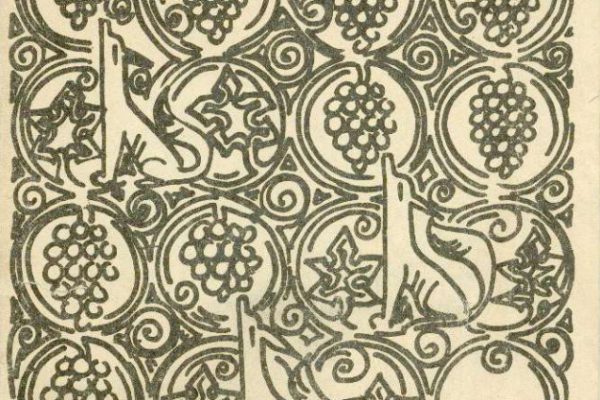
Armenian folk riddles have, for centuries, accumulated and transmitted the experience of the people, the wisdom connected with life, and the images and atmosphere of daily existence. Yet they have not been limited merely to entertainment or, so to speak, a “game of wit”; rather, they have become expressions of the Armenian spiritual and cultural worldview.
Within this rich heritage of riddles, grapes and wine occupy a special place as symbols of national identity and culture, especially given that wine also holds an essential and cornerstone role in Christianity. In the Armenian Highlands, grapes and wine have been closely associated with livelihood, Christianity, fertility, family, and other vital concepts. The vine, the harvest, and the making of wine were considered not only crucial agricultural activities but also integral parts of daily and ancient ritual practices. Grapes and wine came to symbolize the cycles of loss and rebirth in life, the fundamental dominion of nature over human fate, as well as spiritual relations connected with God.
I have a cow,
Its grapes resemble those of Isfahan,
It gives milk once a year.
[vine and grapes], (Vagharshapat)
It comes in summer,
Dies in autumn,
Rages in winter.
[grapes, wine], (Mush)
God planted it,
Man tore it down.
[grape], (Kharberd, Bapert, Kyurin)
In the first riddle, the “cow” refers to the vine, whose yield is compared to the rich produce of Isfahan, emphasizing its quality. The “milk” symbolizes the fertile vine, which bears fruit once a year. The mention of Isfahan highlights historical ties and broad geographic dissemination of grapes. The second riddle illustrates the viticultural life cycle—growing in summer, bearing fruit and turning into wine in autumn, and hardening in winter. The third reflects the notion that nature’s gifts ultimately come from God.
In Armenian folk tradition, grapes have symbolized unity, wealth, and cohesion. Riddles about grapes, vines, and wine often contain multilayered meanings and symbolic references, revealing the depth of cultural life and spiritual heritage. For instance:
I have a cow from Van,
Its udder from Isfahan,
It gives milk but never comes home.
[vine and grapes], (Nakhichevan)
Here, the vine is compared to a cow, while the harvest and wine are likened to milk. Such imagery reflects ancient patriarchal concepts tied to farming and the significance of cultivated plants and domestic animals for family livelihood.
Another riddle likens a bunch of grapes to the head of a sheep, a familiar comparison in folk imagination between plants and animals:
A hundred sheep’s heads,
All tied in one knot.
[grape], (Artsakh)
Some riddles elevate the grape as a divine gift, while man’s role is seen not as creator but as caretaker and cultivator, entrusted with the responsibility to preserve and develop this sacred blessing:
God planted it,
Man tore it down.
[grape], (Kharberd, Bapert, Kyurin)
This underscores the idea of the sacredness of nature in the Armenian worldview: the grape is not just a fruit, but a God-given opportunity to create life, make wine, celebrate, and bring harmony between spiritual bliss and daily life. In simple words, the riddle conveys a profound truth: man is not the master of nature but its faithful worker, a participant in God’s creation when he tends the vine, waters it, binds it, and brings forth good.
There are also numerous riddles where grapes are personified and compared to human appearance. For example, a single grape berry is likened to an eye—thousands of them, eventually taken together to the marketplace:
It is one, its eyes a thousand,
In the morning it is driven to market.
[grape], (Lori)
Straight hair, curly beard,
Wise elder, foolish brother.
[vine, bunch, grape, wine], (Lori)
Dry hair, green beard,
Crazy brother, sweet elder.
[…], (Shirak)
In these riddles, the vine produces fruit, while wine—an embodiment of life’s joys and sorrows—becomes a companion to both wisdom and folly, like two brothers. In certain ethnographic regions, riddles explicitly show the continuity of grapes and wine across generations, again paralleled with human lineage:
My father’s skin,
They drink me.
[grape, wine], (Nor Nakhichevan)
A crouching mother,
A wise son,
A mad grandson.
[vineyard, grape, wine], (Shirak)
Thus, grapes and wine form an inseparable part of Armenian daily life and cultural rituals. They are tied to feasts, celebrations, and even sacred rites. In ancient Armenian texts as well as historical sources, wine symbolizes awakening, fertility, and spiritual purity. This is why viticulture and winemaking have always been of great importance to Armenian cultural identity.
Armenian folk riddles about grapes and wine are far more than mere games or amusements. They express profound cultural meanings, a philosophy of life, and humanity’s relationship with nature. Grapes and wine are pillars of the Armenian spiritual and cultural worldview, uniting the soul of the people both in the past and today. Through these riddles we see how, by preserving its traditions, the Armenian people have simultaneously transmitted essential economic, social, and spiritual values—values that remain vital as a core part of Armenian culture.

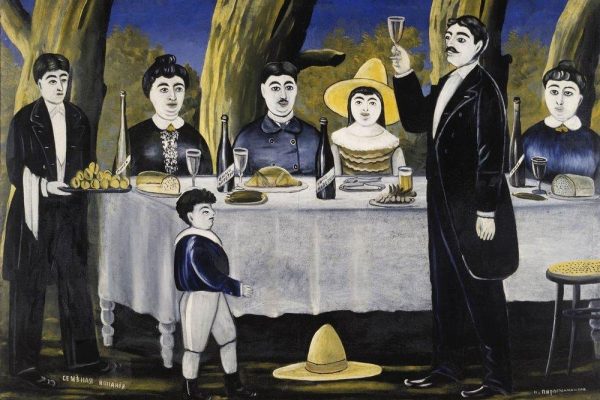
In Classical Armenian, the word kenats (կենաց) meant “life.” In later periods, it came to refer to “a wish for well-being offered during a toast” or “to empty a glass while wishing someone long life during a toast” (Jeredian, Donikian, Der Khatchadourian 1992, p. 999). The renowned lexicographer Eduard Aghayan defines the word kenats as “a benevolent wish proposed in honor of someone or something during a feast or banquet; a toast, a health” (Aghayan 1976, p. 176). Also noteworthy are the derived terms kenatsachar (toast speech), kenatsanvag (music following a toast), and kenatsapar (a dance performed after a toast), which respectively mean a blessing, music following a toast, and a post-toast dance (Aghayan 1976, p. 176).
One of the earliest written references to a toast possibly belongs to Faustus of Byzantium. Describing the Persian King Shapur’s admiration for Mushegh Mamikonian’s noble act of returning the women of the harem, the historian writes: “At that time, Mushegh had a white horse. And the Persian King Shapur, when he would take a goblet of wine in hand during moments of joy and feast with his army, would say, ‘Let the white horseman drink wine.’ And he had an image of Mushegh riding the white horse engraved on a goblet, which he would place before him during feasts and repeat, ‘Let the white horseman drink wine’” (Byzantium 1968, p. 233).
However, oral tradition contains examples that point to even older historical layers, according to which the very first toast was offered by Noah. When his sons attempted to drink the juice from the grapes he had planted, Noah forbade them, fearing it might be harmful. He drank it himself to test it, so that any harm would fall on him alone. Witnessing this self-sacrificial act, his sons said to him, “Let it be gentle” (anush lini), originally anuzh lini (powerless), which later evolved into anush lini (may it be sweet) (Gyulumyan G., Fieldwork Materials, 2012). This concept is echoed in a traditional toast exchange, where the drinker declares “Life!” (kendanutyun), and the addressee responds, “Sweet immortality!” (Harutyunyan et al., 2005, p. 285).
In the Christian era, wine became symbolically equated with the blood of Christ, regarded as a sacred drink. The person offering a toast and the recipient both believed that their blessing would be fulfilled (Akinian 1921, pp. 106–107).
Another ancient formulation of the toast appears repeatedly in the Armenian national epic “Sasna Tsrer” (Daredevils of Sassoun): “Bread and wine, may the Lord preserve us!” (Hatsn u ginin, Ter kendanin)—a phrase used by heroes before confronting enemies, functioning as both oath and wish (Sasuntsi Davit 1993, p. 268).
Wine and the toast appear inseparably linked: wine-drinking was not merely celebratory but embodied promise, oath, even a vow of vengeance. This is reflected in the song dedicated to Soghomon Tehlirian, where each quatrain describing Talat Pasha’s trial and execution concludes with the refrain:
Pour wine, dear friend, pour wine,
May it be sweet for the drinkers, sweet for the drinkers.
Here, wine and the toast merge into a vow of vengeance, particularly as the act is associated with Nemesis—the Greek goddess of retribution.
In the Armenian setting, a toast could not be offered arbitrarily. A toastmaster (tamada) was first selected—often the head of the household or an elder guest, whose own toast was proposed by the host:
“Tamada jan, may your toastmastership always be for such joyful tables” (Vardumyan 1969, p. 98).
In Artsakh, it was unacceptable for someone to offer a toast independently without permission from the tamada. Such an act was considered disrespectful, and the tamada could express offense publicly. Proper etiquette required that one first request permission from the tamada, who could either grant or deny the right to speak. Interrupting a toast—especially the tamada’s—was deemed a serious insult and could provoke conflict.
Armenian toasts exhibit fascinating variety. The first is typically dedicated to the meeting itself, known as the baré tésutyun (joyful encounter) toast, which effectively marks the opening of the banquet:
“Welcome, you have a place above our heads. Eat, drink, enjoy, and may the thorn in your foot be in my eye” (Gyulumyan G., Fieldwork Materials, 2012).
This was usually offered by the host to the guests, particularly honored individuals. Convention dictated that the recipient of a toast stand first and sit last, after everyone had emptied their cups.
As the banquet progressed, the toasts would evolve according to its context, encompassing all stages of life—birth, youth, marriage, parenthood, and death. These toasts, often grouped thematically, unfolded in a sequence reflecting key life events—whether joyous or tragic. For instance, toasts to newborns conveyed poetic blessings:
“May their path be long,” “May their hair be as white as an egg,” “May their beard turn to snow” (Gyulumyan G., Fieldwork Materials, 2016).
From Trabzon, we have beautiful wedding toasts:
“May you bloom and flourish, grow old on one pillow, and live to see your grandchildren and great-grandchildren blossom—don’t forget us” (Yalanuzyan 1981, p. 82).
“Be as a flower—always blooming; be as sugar—always sweet; learn from your elders, teach your young” (Yalanuzyan 1981, p. 82).
“Bloom like a rose, sing like a nightingale, remain youthful in spirit and loving in age” (Yalanuzyan 1981, p. 82).
“Blossom, form bouquets, become a fruitful tree” (Minasean 1988, p. 239).
Toasts directed at youth combined well-wishes and moral counsel, often presented through allegorical stories culminating in a succinct toast:
“Be well, be upright, may God prolong your journey, love one another—in the light and beneath it. Be respected and respectful on all sides” (Yalanuzyan 1981, p. 82).
Such toasts often transcended Armenia, spreading across the Soviet Union:
“To the youth of the Soviet country—let us toast the Komsomol army of millions of boys and girls” (Vardumyan 1969, p. 197).
“May all your endeavors succeed—may this toast be to your health and success!” (Vardumyan 1969, p. 197).
Many toasts were general and personal:
“To your humanity, may your dear health be toasted, with your family, your children” (Vardumyan 1969, p. 198).
Peace-themed toasts were ubiquitous on Armenian tables—particularly significant for a war-torn nation:
“Let us toast world peace, for it was the great Russian people who saved our Armenians from the Muslim bloodthirsty executioners. Our forefathers willed that we never let go of the Russian savior’s hem” (Vardumyan 1969, p. 199).
Yet peace toasts could also express aspirations for victory:
“Let there be peace in the world—but if there is war, let us be the victors, for we are in the right” (Gyulumyan G., Fieldwork Materials, 2018).
Toasts to national heroes who died for Armenian freedom are also common, transforming the toast into a form of remembrance, transmitting memory to future generations.
Armenian tables featured festival-related toasts as well—on New Year’s Day (“May the New Year bring new successes”), on Army Day, Women’s Day, Easter, and so on (Gyulumyan, Fieldwork Materials, 2012). Some toasts reflected philosophical and existential musings:
“Don’t forget death—it awaits us all. I wish we suffer no untimely losses, only timely ones” (Vardumyan 1969, p. 200).
“I hope that when your time comes, everyone will say, ‘God rest your soul; what a pity for such a good person’” (Vardumyan 1969, p. 200).
The final toast at a banquet was always for the household. It summarized the entire celebration and honored the host:
“To the hearth, health and blessings. May even greater feasts be held in this household” (Vardumyan 1969, p. 197).
Thus, the toast (kenats) is a central element of Armenian wine-drinking culture, combining wine, speech, and ritual. Its ancient roots reveal that it is not merely a festive formality but a cultural code of blessing, oath, and even obligation—transmitted across generations. Wine functions as the sacred fluid that seals the toast, while the tamada ensures that tradition is upheld and blessings are delivered properly.
For Armenians, the toast is not just a phonetic or graphic tradition—it is a living ritual that fuses history, language, and collective memory. By preserving its traditional rules while adapting them to modern life, we safeguard and pass on a vital layer of cultural identity.
References (in English)
Akinian, N. (1921). Five Wandering Ashughs: Minas the Scribe of Tokat. National Library, Vol. XLII. Vienna: Mekhitarist Press.
Aghayan, E. (1976). Explanatory Dictionary of Modern Armenian, Vol. 1. Yerevan: Hayastan Publishing House.
Faustus of Byzantium. (1968). History of the Armenians. Yerevan: Hayastan Publishing House.
Harutyunyan, S., Kalantaryan, A., Petrosyan, G., Sargsyan, G., Melkonyan, G., Hobosyan, S., Avetisyan, P., & Gasparyan, B. (2005). Wine in Armenian Traditional Culture. Yerevan: Center for Agribusiness and Rural Development; Institute of Archaeology and Ethnography, NAS RA.
Cherefjian, G. (Archbishop), Donikian, K., & Ter Khachaturian, A. (1992). New Dictionary of the Armenian Language, Vol. 1. Beirut: K. Donikian & Sons Publishing House.
Minasyan, Kh. (1988). Village Speech and Expression (Peria Region). New Julfa: Printing House of the St. Savior Monastery.
The Daredevils of Sassoun: Collected Text. (1993). Compiled and edited by Grigor Grigoryan. Yerevan: Armenian Academy of Sciences Publishing House.
Vardumyan, B. (1969). The Village of Vagharshapat: Toasts. Archive of the Institute of Archaeology and Ethnography, Entry No. 2.
Yalanuzyan, A. (1981). Folktales, Stories, Songs, Proverbs, and Dictionary of Jhenik (Trabzon). Archive of the Institute of Archaeology and Ethnography.
Gyulumyan, G. (2012, 2016, 2018). Fieldwork Materials (DAN). Institute of Archaeology and Ethnography, NAS RA.
Gevorg Gyulumyan

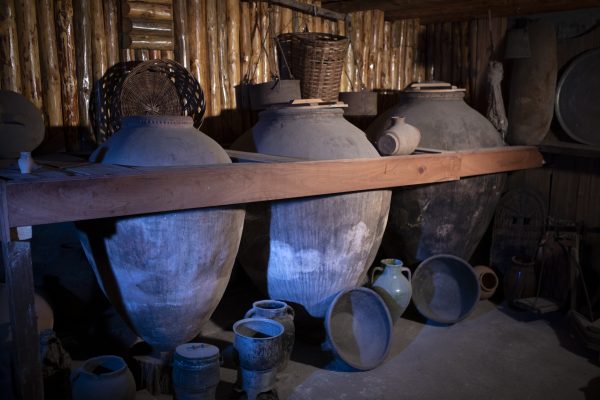
Ashtarak is one of the important regions of Armenian winemaking culture, about which, along with numerous primary sources and researchers, significant data is also provided by the prominent writer, historian, and ethnographer Yervand Shahaziz in his book “History of Ashtarak” (Yerevan, “Hayastan” publ., 1987, 251 pages), and later supplemented by Gevorg Gevorgyan, whose manuscripts (HAI archive, Gevorgyan Gevorg, Ethnographic materials of Ashtarak, 1972, file 1, 99 pages) are kept in the Institute of Archaeology and Ethnography of the National Academy of Sciences of the Republic of Armenia.
Shahaziz began writing his work in 1908, completing it in 1934. In the study, which lasted more than a quarter of a century, giving a special place to the winemaking of the Ashtarak region, relying on earlier sources, Shahaziz comes from the depths of history and reaches the period in which he lived. Particularly noteworthy are the testimonies related to the winemaking culture of a relatively new period, especially since the author himself witnessed all this.
He writes that starting from the 18th-19th centuries, the grape growers of Ashtarak first harvested the grapes and exchanged them with the herders coming down from the Aragatsotn mountains, thus storing their winter supplies (oil, cheese, butter, etc.), after which they immediately started the grape harvest intended for wine.
The ethnographer notes that in the early period, the people of Ashtarak built their wine presses[1] right in the vineyards, thus living for two to three months of the year in temporary shelters made in the gardens. “…he, on the one hand, harvested the grapes, carried out with large milking pails the roof of the winepress, and poured right through the yerdik (roof opening) to the aragast (pressing floor), where they were pressed, and the muz (must) going like a stream, was poured into takars (large earthenware jars), on the other hand, the must be more or less settled in the takars, the clarified juice, or, as they say, kaghtsu, was carried with leshks (untanned calfskins), to his shiratun (wine cellar) and poured into karases (large earthenware jars, pitchers), on the third hand, the women have taken their share of kaghtsu, they cooked mat (a sweet grape preserve), they conserved and prepared shpot, dipped the rows of walnut, almond, melon seeds, made shudzhukh (churchkhela). There remained the remains of the grapes, the kncher (pomace), from which the Ashtarak resident used to distill oghi (fruit vodka) …” (Shahaziz 1987, 216).
After the beginning of the 20th century (that is, the time when Shahaziz started to create his work), the people of Ashtarak no longer had wine presses in their gardens. Instead of the former wine presses, at that time they built three-walled, open-faced, light, temporary structures in the gardens – “dagans”, in which the gardeners in the gardens during the months of fruit and grape harvest sheltered from the rain. “…long ago the grapes are no longer pressed in the vineyards, but during the harvest, on the one hand, the grapes are harvested, and on the other hand, they are transported by horses, donkeys and carts to the village, where aragasts and takars are built in the houses, everywhere” (Shahaziz 1987, 218).
Those buildings were called hndzanabags, but Shahaziz finds it difficult to specify their structure. P. Proshyan describes the hndzanabag as follows: “It is a ruin, the surfaces of the square hewn stones along its approximate length are pitted in places by the eroding force of time. The archaeologist would date it to at least 700-800 years” (P. Proshyan, Tsetser, Tiflis, 1889, publ. M.D. Rotinyants, p. 48).
The writer-ethnographer presents with special luxury and colorful images the Ashtarak resident who “entered the house” after the grape harvest, already in winter, when his revelry began and “he put the new wine on the table, which had not even fermented and, one might say, was machar – “a tart, sweet and mild, cloudy kaghtsu, which has been in the process of fermenting, of becoming a real wine” (Shahaziz 1987, 219).
Agreeing with all the claims of the Ashtarak resident’s security, Shahaziz, however, opposes the wording “wine-drinking Ashtarak resident”, noting that, yes, a lot of wine is created in Ashtarak, but the people of Shirak and Pambak drink more Ashtarak wine and oghi than those who make them. “…he drank and drinks, his table was not without wine and oghi, but he drank in moderation, drunkenness has always been an unfamiliar passion to the Ashtarak resident.” … The old Ashtarak resident liked to be happy, to have fun, but those “entertainments never had a hooligan character” (Shahaziz 1987, 220).
G. Gevorgyan writes about the wine-making culture of Ashtarak in more detail and vividly. He writes that the karases in Ashtarak were washed with water, then the inner walls were smeared with melted fat, after which they were filled with must, which had to be filled to a special extent, because in case of filling it completely, the karascould burst during fermentation. In order to avoid all this and to be safe, people placed the karases on cemented aragasts, thanks to which, in case of breaking the karas, the must would not be absorbed into the soil, but would flow and fill the takar.
Gevorgyan writes that after gaining the possibility of using sulfur, Ashtarak winemakers disinfected the barrels more easily. They burned sulfur-coated papers in an empty barrel, which perfectly cleaned it of all the bacteria and fungi that could remain and spoil the wine. “After filling the karases with must, after a few days it starts to boil, producing carbon dioxide gas, so if the number of karases is large, it is terrible to enter the cellar at that moment, a person can be suffocated by the gas. There have been cases when a person has suffocated while removing the knjir (pomace) from the takar” (Gevorgyan 1972, 70).
About a month later, it is necessary to “krtel” the wine, which means to separate the dirt (lees) from the clear wine. This is also an important and interesting operation, which the ethnographer presents in full detail and mentions the dialect names of all the tools used in the whole process (aragast, takar, gup, tik, karas, abigardan, jujum (a measure equal to half a bucket), parch, kereghan (for drinking)).
It was necessary to insert the long stick into the barrel, to understand how much part is sediment, how much part is clear wine, then to remove the clear wine with the abigardan and pour it into another, already cleaned and prepared karas. “Later, when the barrel entered use in Ashtarak, the siphon, a rubber tube, also entered use with it, since the abigardan would not fit into the barrel, then, when they measured the amount of sediment in the karas or the barrel full of wine, one end of the rubber tube was tied to the measuring stick from where the wine and sediment separate from each other, then the stick was lowered into the karas or barrel with the tube, the wine was drawn by mouth from one end of the tube, and when the wine started to flow, they put it into an empty karas or barrel, the pure wine was transferred to an empty barrel or karas. In this way, the barrel was filled to the top and the mouth was closed with a wooden stopper, sulfur powder was poured around the stopper… to protect it from vinegar flies” (Gevorgyan 1972, 70).
It is also noteworthy that the Ashtarakians strictly forbade placing cheese, pickles, kerosene or dried spices near the wine karas or barrel, because wine is sensitive to smells and tastes and can absorb them. “…imagine that you are drinking wine and smell kerosene” (Gevorgyan 1972, 71). G. Gevorgyan also refers to the famous grape variety “Kharji” and notes the history of obtaining a “Sherry” type wine from it. “An Ashtarakian noticed early on that a membrane had formed on the surface of the wine in his karas, he thought that the wine had gone bad, but when he drank it, he saw that it was tastier and more aromatic, not realizing that this membrane on the surface of the karas was nothing other than a sherry fungus. … The first study of this fungus was conducted by the winemaker Afrikyan, who visited Ashtarak. She found it better than Spanish sherry, and thanks to the Soviets, a winery was built in Ashtarak. It was thanks to the winery that at the 1970 international wine tasting [the wine] won first place in the world, receiving a gold medal” (Gevorgyan 1972, 71-72
[1] On the wine press culture of the Ashtarak region, see G.S. Tumanyan, Wine Press Culture in Armenia, Yerevan, “Zangak-97”, pp. 31-32, 40, 44, 50-54; H.L. Petrosyan, S.G. Hobosyan, H.P. Hakobyan, Medieval Wine Presses of Ashtarak, Yerevan, 1989, 90-92; E.N. Hakobyan, The Architecture of the Folk Dwelling of the Ashtarak Region, Yerevan, pp. 34-39.
[gallery ids="2588,2591,2594"]
Gevorg Gyulumyan
National Academy of Sciences of the Republic of Armenia
Institute Archaeology and Ethnography

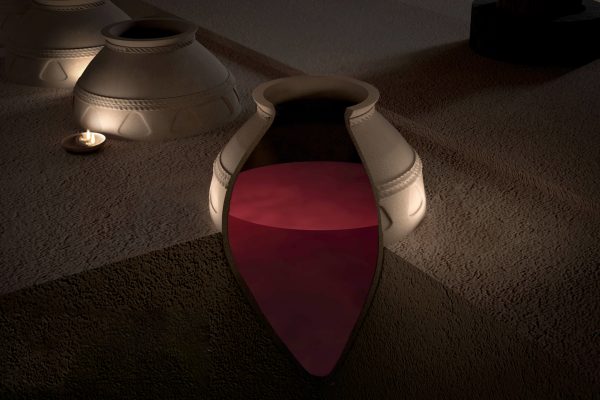
In the Ancient Near East, pithos of various sizes and capacities were widely used in multiple sectors of the economy. In Egypt, Assyria, the Hittite, and Urartian kingdoms, grain and different agricultural products, especially wine, beer, and oils, were stored in jars. Thousands of potteries were discovered during excavations in Van, Argishtikhinili, Erebuni, Ayanis, Toprak-Kale, Teishebaini, and pre-Hellenistic Artaxata.
Among the archaeological discoveries made in Karmir Bloor, 8 wine cellars founded in the 50s of the last century are very important for studying the economy of the Van kingdom. They contained more than 400 massive clay vessels.[1].
A significant amount of karas, partly from Karmirblur, marked with wedge-shaped or hieroglyphic digital marks, was also found in other Urartian monuments: more than 100 karases were found in the Erebuni[2] cellars, more than 70 in Altyn-Tepe[3], 68 in one of the wine cellars of the western fortress of Argishtikhinili[4], in Ayanis, Adldzhevaz, etc. The largest and good preserved were cellars N 25 and N 28 in Teishebaini, excavated in the 1950s, which contained 82 and 70 karases[5]. All karases are identical in form, but differ in size, which is indicated by the wedge-shaped or hieroglyphic markings in the Urartian measures of liquid volume, “akarki” and “terusi”. Published by B. B. Piotrovsky[6], these inscriptions had a broad variation: from 1 akarki 4½ terusi up to 5 akarki 5 terusi. Cuneiform and hieroglyphic signs were used in parallel, with cuneiform initially written in full, and later in the form of abbreviations of letters.
According to a number of researchers, the pithos discovered in Karmir-Blur were in different workshops, and most likely, they were made by 8 or more masters in Teyshebaini.[7] This proves that the national standardization system was implemented in the cities, which made the economy of the state manageable and accountable, which contributed to its progress.
Comprehensive metrological studies of karases of various capacities, discovered from several archaeological sites, show that they were made according to pre-fixed, standardized sizes. Standardization of ceramic ware by state decree of its main linear dimensions known in the ancient world. This is how the government achieved the unification of container volumes both for storing stocks of products and for their transportation and sale. As is evident from the Thasian decree of the second half of the 5th century BC, the standardization of the production of Thasian pithos to achieve uniformity and volumes was strictly regulated by the state by decreeing the sizes in units of length measures—dactyls (fingers)[8]. The red-glazed, spherical, three-leafed rimmed jugs with one handle (Oinochoia), found in several Urartian archaeological sites, also meet the standards. They were intended for serving wine and are almost identical in size. Thus, there is reason to believe that the origins of standardization of ancient pottery production originated in the Ancient Near East.
It is known that in the case of a reduction in the size of ceramics of different groups as a result of drying and firing, it is on average 8–12%. Probably, the potter was given two different sizes: a preliminary one, which the master had to use as a guide when forming the product, and a final one, to which the final dimensions of the product had to correspond. Moreover, it was impossible to produce pithos of such volumes in ideal standard sizes, and it was obvious that karases needed to be labeled with an indication of their capacity. Hieroglyphic and cuneiform inscriptions were made only after the jars were fired, transferred to the cellar, and filled with wine[9][10]. This is also evidenced by the fact that the inscriptions on the karases were carved into vessels that were already half buried in the ground so that they would be visible when walking through the depths of the wine cellar[11]. It should be noted that the dimensions of the jugs are indicated three times, the difference between which reaches several terusi.
According to B. Piotrovsky, 1 “akarki” was equal to 250 liters, and “terusi” was equal to ⅒ of “akarki”. Marking of the capacity on the karasakh is slightly different from each other. Probably, 1 “akarki” was divided into 10 “terusi”, based on the hypothesis that the Urartian number system was based on the decimal system[12]. Brashinsky believed that the simplest solution to the problem was metrological calculations since any measurement of volume is based on cubic units of some basic measure of length[13] (for example, the Phoenician kor is the volume of three cubic cubits, the Urartian cubit /53.1 cm/).
The cellars of Karmir Blur contained about 400,000 liters of wine /1,500 akarki/, which is a very impressive figure by the standards of the ancient world. The cellars of the monument surpass all the wine cellars of the Urartian period excavated to date, even near Manazkert, in an inscription erected by Menua, where a wine warehouse with 900 “akarki” is mentioned.
The fact of state standardization of pottery production in the Kingdom of Van is of great interest, especially in the context of studying the origins of standardization in general and its influence on the development of subsequent civilizations.
[gallery ids="2477,2483,2474,2486,2480,2471"][1] B. B. Piotrovskiu, Kingdom of Van, М., 1959, pp. 145—147; same author, City of God Teisheba, С А, 1959, No 2, p. 172.
[2] Demskaya D., Erebuni Storerooms, “Communication of the A.S. Pushkin State Museum of Fine Arts”, issue IV, 1968, 176-182.
[3] Özgüç, T., Altintepe II, Ankara, 1969.
[4] A. A. Martirosyan, Excavations of Argishtikhinili, SA, 1967, No. 4, p. 228; cf. also, On the socio-economic structure of the city of Argishtikhinili, SA, 1972, No. 3, p. 46.
[5] B. B. Piotrovsky, Karmir-blur, II, Yerevan, 1952, pp. 16-40.
[6] B.B. Piotrovsky, Wedge-shaped Urartian inscriptions from excavations at Karmir-blur in 1954, – “Epigraphy of the East”, XI, 1956, p. 81
[7] Ghasabyan Z. “Historical and Philological Journal”, 1959, No. 4, p. 213.
[8] I. Brashiisky, Methodology for studying standards of ancient Greek ceramic containers, S. A., 1976, No. 3,
[9] Ghazabyan 1959, 215.
[10] B. B. Piotrovsky, Karmir-blur, III, p. 23.
[11] B. B. Piotrovsky, Karmir-blur, II, p. 65.
[12] M. A. Israelyan. Clarifications on the reading of Urartian inscriptions, I. On the Urartian number system, “Ancient East”, 2, p. 116.
[13] I. B. Brashiisky, Urartian karases, “Historical and Philological Journal”, Yerevan 1978, p. 152.

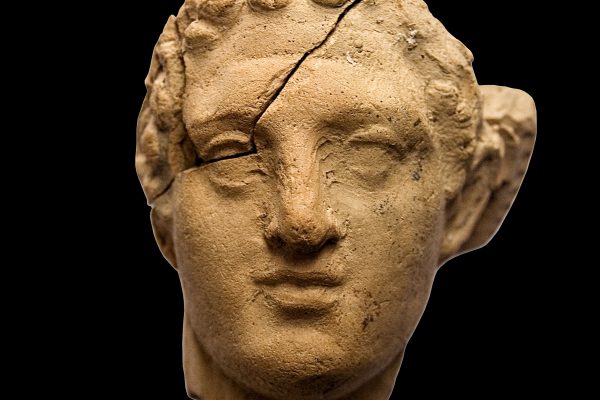
It is known that winemaking and viticulture occupied a special place in the material and spiritual culture of the Hellenistic world, where creativity associated with wine is limitless. The influence of this culture, emphasized by local form, is also noticeable in Armenia.
Wine as a commercial commodity was made in ancient Armenia in large quantities and exported to the global markets. It is not incidental that wine from the “land of Armens” was in great demand during Herodotus’s times. He tells us that merchants transported red wine made in Armenia in karases (pithoi) down the rivers Euphrates and Tigris to Babylon. According to Strabo, there were fertile valleys in Armenia: Araks and Utik[1]. In the 4th century CE, the demand for Armenian wines was so high that the city of Vagharshapat became a center of the wine trade, as evidenced by the “Babylonian Gemara”[2].
Several important international trade transit routes passed through Armenia, both from China, Central Asia, and Northern India to the West, from the south to Mesopotamia, Syria, to the north, and the coasts of the Black and Azov Seas. The cities of Armenia were mainly located on strategic trade routes and took an active part in this trade with their products.
Utensils for preserving and using wine are of great interest: clay karases of varying sizes, pitchers, goblets, rhytons, and ritual and utility items of bronze, silverware, and glassware were all discovered during excavations at various sites. Below we will consider some of them.
Thanks to archaeological research in Garni, Armavir, Artashat, and Sisian, it became possible to get acquainted with the toreutics of ancient Armenia. Armenia is one of the oldest cradles of metalworking, therefore artistic metalworking has been known since centuries immemorial. In this context the princely tomb excavated near the city of Sisian in the 1970s is remarkable. Without going deep in detail about the significance of the tomb within the study of the culture of Classical Armenia, we will note that, along with several objects, three silver bowls were discovered here, intended, for serving wine. The bowls differ little from each other in size. The rims of the vessels widen inward and become rounded. One of the bowls is distinguished by its luxurious decoration, and its surface is divided into eight equal parts, the first four of which are decorated with decorative flutes, and the remaining four with pointed, elongated leaves, probably Sagittaria and stylized grape vines. Similar hemispherical bowls, considered Hellenistic, were found in Avshan in southwestern Armenia[3]. Bowls of this type were used in sacred ceremonies dedicated to the gods. Of particular note is the silver bowl found in the tomb, which, instead of plant-geometric images, has a unique Aramaic inscription. From the inscription it becomes clear that one of the princes of Syunik was buried in the tomb, probably Pitiakhsh[4] (governor of the province), the name has been preserved, as well as additional information about the units of weight of ancient Armenia. “This cup belongs to Araxszat, the weight of the silver is 100 drachmas.” The Aramaic inscription in its written form is related to the Aramaic traditions of Northern Mesopotamia[5]. The appearance of such a font in Armenia occurred in the 1st century BC during the reign of Tigran II. The same style of writing is used in Aramaic inscriptions on a glass spoon and a lapis lazuli plate discovered on the first hill of Artashat, which date back to the 1st century BC[6][7]. According to researchers, the name Araxszat mentioned in the inscription on the bowl is the name of the cup’s owner, which is encountered for the first time. The materials of the tomb in Sisian once again testify that one of the four military leaders, in the eastern part, was the prince of Syunik. The name Araxszat is translated as “born under the protection of the gods.”
The next evidence related to wine is known from excavations in the capital of Artashat – these are exclusive gold earrings depicting women’s faces. The earrings were discovered in the 1980s during excavations of a rock-cut tomb on top of a hill called “Golden Hill,” located in the northwestern part of the city. These are earrings depicting Maenads. It is known that Maenads were companions and admirers of Dionysus, the god of viticulture and winemaking in Greek mythology. Dionysus often appears surrounded by a jubilant crowd of Maenads and Satyrs. Around him, singing and shouting, dancing, young Maenads circle, tailed and goat-legged Satyrs jump, drunk with wine. The retinue ends with the old man Silenus, the wise teacher of Dionysus, who is very drunk. He sits on a donkey, leaning on a wineskin placed close to him.
Among the dozens of clay figurines found in Artashat, the figurine depicting a seated old man deserves special attention. Round head, bearded face, dense figure with pronounced muscles on the chest and stomach. With his right hand, he was hugging some object, perhaps a vessel or a wineskin. All this conveys the characteristic image of Silenus, who in Greek mythology is considered the mentor and teacher of Dionysus. Here, it is also necessary to mention the preserved head of a small clay statuette (height 5 cm), accidentally found in the city of Vagharshapat, depicting Dionysus. The statutes are exhibited in the History Museum of Armenia. A very interesting clay jug with the image of Dionysus is exhibited in the Shirak local history museum, it was discovered during the excavation in Benjamin and dates back to the 1st century AD. Here the deity is presented in a very interesting form: his face and hands were plastered to the inner side of the pitcher immediately after its manufacture, creating the impression that Dionysus is trying to get out of the vessel.
It is noteworthy that the historian of the 10th century Tovma Artsruni mentioned the sanctuary of Dionysus, built by King Artashes I in the province of Pokr Agbak of the principality of Korchayk of Greater Armenia[8]. Artashes I attached great importance to the development of horticulture and viticulture[9]. He planted “groves of lush trees, vineyards and various fruits” in the southern suburbs of the city of Van[10].
Of interest are three bear-shaped vessels found in Armenia, one of which was excavated in the Vayots Dzor region and the other two in different areas of the capital Artashat. The zoomorphic vessel from Vayots Dzor is similar to the vessel found in the room of the crafts quarter on the 8th hill of Artashat, with some differences in size and decor. The vessels are associated with the serving of wine and date back to the 1st-2nd centuries AD.
Excavations of monuments of the classical period of Armenia – Armavir, Garni, Artashat, and other places – testify to the great influence of the ancient period and, in particular, the Hellenistic world from the 2nd century BC to the 2nd century AD on Armenian culture.
Thus, in the countries covered by Hellenistic cultural circles, including Armenia, several cultural communities emerged that were not so much borrowings as the fact of the existence of a certain common artistic atmosphere that formed a unique region that existed throughout the Hellenistic East.
[gallery columns="4" ids="2429,2432,2444,2450,2435,2441,2438,2447"][1] Strabo 1964, II, I, 14.
[2] Gasparyan B., Vine and Wine, Yerevan 2005, p. 145.
[3] Mithcell St., Asvan Kale, Anatolian studies, vol. XXIII, 1973, fg. 23, 3
[4] Khachatryan Zh., The Tomb of Sisian, NAS RA “Gitutyun” publishing house, Yerevan, 2009.
[5] Perikhanyan A., Aramaic inscription on a silver bowl from Sisian, IFJ 1971, N3, p. 78-81.
[6] Khachatryan Zh.D., Glassmaking in Ancient Armenia, IFZ, 1971, N3, pp. 78-81.
[7] B. N. Arakelian, Artashat I, Main results of excavations 1970-1977, Academy of Sciences of the USSR, 1982.
[8] Tovma Artsruni, 1985, I, 8, 91.
[9] Palandjyan R., Archaeological finds related to winemaking in Ancient Armenia from Vayots Dzor, IAE, Yerevan 2023.
[10] Tovma Artsruni, 1985, I,7, 8, 85, 87-89.

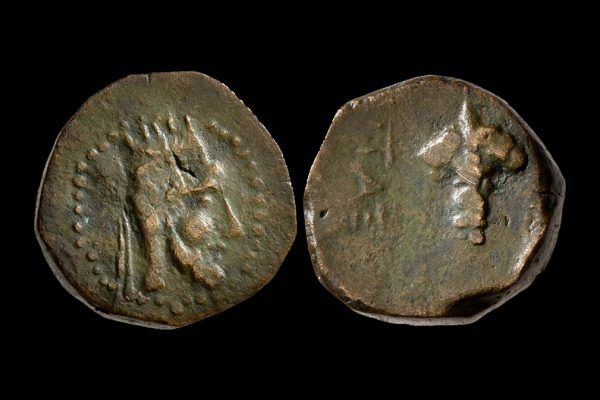
Among the historical and cultural achievements of the ancient Ecumene are several trade items: coins, seals intended for important states, and commercial documents—bullae, which depicted various scenes related to viticulture and winemaking. The influence of this tradition is also visible in Armenia.
The excavations of ancient Artashat, which began in the 1970s, revealed the city’s significant role in the ancient world and shed new light on the material and spiritual culture of ancient Armenia. Of particular value in revealing a number of important socio-economic problems of antiquity are the three city archives[1] found, in which important documents were sealed, as well as monetary inventions—coins.
As one of the region’s most important centers of viticulture and winemaking, Armenia was located at the crossroads of major trade routes. As evidenced by archaeological research of the last decade. The series of bullae from the first archive of Artashat, related to wine, are unique. On the obverse of some bullae, a narrow vessel is depicted, probably an amphora, placed between two bunches of grapes and a star at the top, on others – grape leaves, depicting a grapevine, as well as individual images of amphorae and vessels. The amphora and grapevines undoubtedly testify to the active trade in wine in ancient Armenia.
The heyday of ancient Armenia was primarily due to transit trade. Capitals levied double duty on goods both for export and import. Rich cities of the ancient world, such as Seleucia on the Tigris, Antioch, Rhodes, Ephesus, Corinth, Delos, etc., also lived off international transit trade.
In addition to seals, a bunch of grapes can also be seen on coins. Similar to the above-mentioned seals are the Seleucid coins of Myrina, on the reverse of which an amphora with grape branches and leaves is depicted under the feet of Zeus[2]. On the coins of the Greco-Roman period of Tarsus, amphoras can also be seen lying on their sides[3]. The type of image of a bunch of grapes on the coins found in Sol is very close to the above-mentioned type of image of Artashat[4]. In Phrygia, on the coins of Dionysuspolis (2nd-1st centuries BC), on the obverse is minted a mask of Silenus, and on the reverse – a grape leaf[5], which we also see on the gem kept in the Louvre[6].
Of particular note are several numerous coins from the Artashes Mint, on the reverse of which a bunch of grapes is depicted. They are known both from private collections and from archaeological finds. Some researchers believe that the coins belong to Artashes I, while others are inclined to attribute them to Artashes II. Coins issued by Tigran II are also known, on the reverse of which a grapevine is found[7].
In general, in Asia Minor, frequent images of grape bunches and leaves are associated with the cult of Dionysus[8], viticulture, and wine export, which once again proves the importance of the wine trade in Armenia. Several Armenian[9] and Greek[10] historians mention the high-quality wines of Armenia.
Armenia has exported wine at various historical periods of its existence. It is no coincidence that Armenian coins, which had the king on the obverse, had a grapevine on the reverse as the country’s most important
[gallery columns="4" ids="2380,2338,2332,2377"][1] Хачатрян Ж., Неверов О., Архивы столицы древней Армении – Арташата, Археологические памятники Армении, Ереван 2008.
[2] Хачатрян , Неверов, 2008.
[3] Goldmen H., Excavations at Gozlu Kule, Tarsus. The Hellenistic and Roman periods, Princeton, New-Jersey, 1950, vol. I, text, p. 403, pl. 276, plan 19, pl. 118, fig. 86.
[4] Cox D.H., A Tarsus coin collection in the Adana Museum, New York, 1941, pl. VI, 129-132.
[5] H. von Aulock, Munzen und Stadte Phrygiens . Teil II, IM, Beiheft 27, Ernst Wasmuth Verlag Tubingen, 1987, p. 52, Taf. 1, 2, 2.
[6] Walter H. B., Catalogue of the engraved gems, N 394.
[7] Gasparyan B., Wine in Traditional Armenian Culture, Yerevan, 2005.
[8] Хачатрян , Неверов, 2008, 88.
[9] Мовсес Хоренаци, История Армении (пер. с древнеармянского языка, введение, прим. Г. Саркисяна), Ереван, 1990, I, 16, II, 12.
[10] Ксенофонт, Анабасис (перевод, стстья и примечания-М.И> Максимовойк). М.-Л., 1951, IV, II, 22, IV, 9; Страбон , II, I, 14, XI, VII, 2, CV, I, 58.

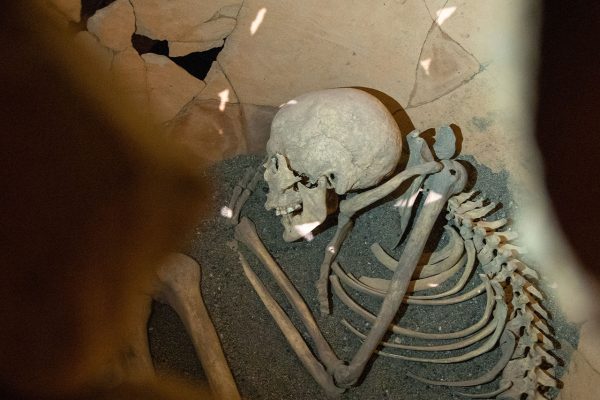
The up to-day ongoing excavations initiated by the Artashat archaeological expedition of the Institute of Archaeology and Ethnography of the Academy of Sciences of the Armenian SSR in 1970 revealed the significant role of the capital in the cultural, economic and political life of Antique Armenia as well as the Near East.
The systematic study of the site enabled to elucidate various spheres of urban life, including the burial types and some rituals linked to them which stand out and are widespread in this territory in the Antique period.
As it is known, capital Artashat (Artaxata) having existed for almost 600 years and presenting one of the populous cities of the country had several necropoleis (North- Western, North-Eastern and Eastern). Their comprehensive study is of much importance from the perspective of specific assessment of the social-economic, cultural, spiritual as well as anthropological-demographic characteristics of urban society.
The first work on this issue is the monograph entitled ‘Artashat II’ by Zh. Khachatryan where the Artashat expedition’s 1971-1976 study results of certain segments of the necropoleis of the antique city as well as separate burials discovered in the territory of the main city are summoned. With all of its importance there are some ‘white spots’ in this study significant part of which is a consequence of the current state of study of the necropoleis (rescue excavations in the territory of cultivated fields) as well as the methodology of registering the material characteristic for its time.
The present work is dedicated to two classical burials excavated years ago in the lands of Pokr Vedi village as well as the tomb recently discovered by accident in the village which serve to fulfill the relevant data on the accepted ways of burials in Artashat and rituals linked to them. At the same time, these artefacts enable to make preliminary judgements on the function of this north-eastern outskirts of the city.
As it is known, during the rescue archaeology process carried out in the southern outskirts of Pokr Vedi village still in 1967, together with the extensive inscription of the Emperor Trajan a gravestone with a Latin inscription of a Roman soldier was discovered (Figure 1/1). Unlike this important epigraph from the perspective of the history of Artashat, the burial itself was not undergone a separate study. The reason was probably
the accidental discovery of the tomb and correspondingly the dubiousness of linkage of some household artefacts to the latter (pottery of the 1st-3rd centuries, grindstones, etc.). Nevertheless, the discovery of this specific tomb in the given territory of the city is already worth an attention (see below). And despite the above-mentioned circumstances of discovery, the funeral type and its accompanying material remain unknown, the tomb of the soldier of the I Italica (Latin: Legio prima Italica /(‘Italian First Legion’)/) should be dated between 114-116 AD, based on the time circumstances of the encamping of Trajan’s army in Armenia.
Subsequently, during the 1978 archaeological campaign on the left-side segment of Lusarat – Pokr Vedi road, Mkrtich Zardaryan, a member of the Artashat expedition, excavated another looted classical tomb which description of which was given in the field diary of the archaeologist. The tomb was an ordinary tumulus, however from its north it had a preserved platform with a length of 9.8 m, about a width of 0.5 m and a height of 0.35 m. The latter composed of two parallel ‘walls’ built with unhewn stones which having bent first joined together and were attached to the tomb in the north- eastern end. The mid part of the platform was filled with hard-packed soil the level of which was probably equated to the mound. From this very platform and the side of the stone rows a huge number of bones of small and big cattle, sherds of glasses, bowls, kitchen vessels, a fragment of a goblet made of translucent glass and with a hinged ornament, as well as two iron knives were unearthed. Separate human bones, bronze mirror and ceramic sherds were found in the distorted tomb. The whole complex of the artefacts found both in the tomb and the platform is dated between the end of the 2nd century AD and the 3rd century AD. The described platform most likely served as a table for wake on which the used utensils were broken and the food remnants were left after the served rituals.
In its turn, the length of the platform allows to make some judgements also on the quantity of the people who took part in the ritual. According to the accepted calculatory criteria, it may be assumed that about 30 people could seat around the ‘table’-platform.
The third tomb of the area under study has been discovered recently. In 2016-2018 the Artashat archaeological expedition of the Institute of Archaeology and Ethnography of the NAS RA jointly with the Institute of Archaeology of Warsaw University conducted works in the north-eastern segment of the capital (‘Pokr Vedi Armenian- Polish project’). The main goal of the project was to discover the supposed camp built by the Scythian Fourth Legion (Latin: Legio quarta Scythica) evidenced in the inscription of the Emperor Trajan accidentally discovered in 1967, or other monumental structure. For the very purpose field surveys and trenching investigations were realized in the area of the discovery of the abovementioned inscription and in the adjacent hylands of the village during April and October of 2016-2017 and in April 2018.
During the surveys we met a resident of Pokr Vedi, Harutyun Arakelyan, who informed that during the building activities in the yard of his house (J. Duryan Street 16) in March 2016 he accidentally came across with a jar burial (Figure 1/2). Harutyun presented the circumstances of the discovery of the latter, as well as provided with some photographs shot at the moment of unearthing the jar (Figure 2/1-2):
According to the discoverer, the jar opened at a depth of 1.5 m was placed at 45 degree of curvature, it had an east-west orientation (the lip directed to the west) and was carefully closed with an unhewn, flat felsite slab leant against the lip of the vessel (width: 45 cm, height: 95 cm, Figure 2/3).
At the moment of registering the jar by the expedition it was already in a fragmented state, the human and animal bones were mixed, the sherds of the clay vessels found in the jar were also separated. After getting introduced to the site of the discovery and the artefacts on the spot and having fixed them, all of the archaeological material was transported to the site of Artashat where the detailed study of the jar burial was realized.
The jar has an oval waist, without an outlined neck, the outer diameter of the round rim is 56 cm, the internal diameter is 45 cm, the general height is around 120 cm, it has a slightly spread floor and a ‘nipple-shaped’ bottom (Figure 2/4). Probably, the deceased was put inside the jar by means of breaking his shoulder which is proved by the in-situ photographs of the vessel and the description of the discoverer. The accompanying material of the tomb had been placed both inside the jar and on its side, however their exact location was failed to clarify.
The red polished spherical flask with thick lining (‘flagon’) has a round rim, a short and narrow neck and two curved, longish handles fixed on the upper part of the waist. The size of the vessel is: height 26 cm, rim diameter 5.5 cm, handle length 7 cm (Figure 3/1).
The flasks in general have their specific place in the collection of the Antique pottery of Armenia (Armavir, Garni, Artashat, Dvin, Oshakan, etc.). They are handmade vessels pressed from both sides. Some of the samples of the flasks found from the Artashat necropoleis are more spherical on one side rather than the other which is for transporting conveniences. The majority of the flasks are colorful, particularly decorated with red and brown concentric circles.
Besides the real flasks from the 1st century BC there appear spherical ‘flasks’ which existed up to the 2nd century AD inclusive. In this period, they lose their flat sides and gain a spherical appearance and have a function of a water jar, pitcher. At the same time, these vessels repeat the tradition of making flasks in the sense of modelling the neck, handles, as well as the two-part waist.
Besides Artashat, similar spherical vessels were found also in Syunik (Sisian, Vayk). The spherical ‘flasks’ are in general red polished. With its parallels from Artashat the spherical vessel of Pokr Vedi is dated by the 1st – the first half of the 2nd century AD.
The sherds of two massive vessels with faucets found from the tomb are worth of attention. Only the segments of the faucets fixed onto the waist are preserved which are horizontally attached to the lip of the vessel and ends in the shoulder (Figure 3/2-3). Fragments of the rims of four pitchers of economic usage were also unearthed which are covered with yellow-greenish engobe much typical for the ceramics of the period under study (Figures 3/4, 4/1).
There was also kitchen ware in the tomb. They were handmade vessels made of grimy or brown coarse-grained clay. Among the latter, the vessel with deaf, vertical handles and weakly outlined shoulders is of particular interest. The length of the handles is 3 cm and they rise to the rim of the vessel (Figure 3/5).
The funeral inventory consists also of red polished spherical bowl with thin lining, crown and circular bottom (diameter 11 cm, height 4.5 cm, Figure 4/2) as well as another bowl with a rim (diameter 35 cm, height 7 cm, Figure 4/3). Similar cups are known from Artashat, Armavir, Dvin and are dated by the 1st century BC – 1st century AD.
The fragment of the drinking bowl is noteworthy which has an emphasized transition from the semispherical waist to the rim. The sherd of the vessel is quite fine, well-burnt, abraded and polished (diameter 14.5 cm, height 7 cm, Figure 4/4).
The examination of the materials of the jar burial of Pokr Vedi village enables to date it by the 1st-2nd centuries AD. Jar burials have been discovered and studied in various archaeological sites of historical Armenia on which detailed outlines are presented in the works of B. Arakelyan, G. Tiratsyan, Zh. Khachatryan and others. To avoid repeating well-known data and non-justified overburdening of the article we want only to state that this type of burial was one of the most widespread not only in the historical territory of Classical Armenia, but also in contemporary Iberia, Caucasian Albania and in the adjacent areas of the Near East. Inhumation and cremation (with placement of relics) in the jar burials are typical for Artashat as well.
Within the borders of Artashat archaeological site, jar burials are more characteristic for the eastern necropolis of the city where the Artashat expedition realized excavations in 1971. The tombs discovered in the south-eastern and south-western parts of Pokr Vedi village come to prove the preliminary hypothesis that the given terrain served as a necropolis, also in various times of Antique period. The abovementioned archaeological
data also testify about it as well as the two other jar burials accidentally discovered and distorted at the beginning of the same J. Duryan Street of Pokr Vedi which were registered within the 2016 survey. Evidently, this terrain was the suburban outskirt of the north-eastern necropolis of the city in the 1st century BC – 1st century AD where burials were continuously made at least until the 3rd century AD. Therefore, the burial of the soldier of I Italica in the territory of an already existing necropolis was completely natural. Under the light of the presented data, the discovery of small limestone bases, separate stone ashlars, mudbrick fragments, grinding stones and diachronic classical ceramics may be assessed as an evidence for the existing burials and their aboveground structures here. The latter’s existence in Antique Armenia is particularly documented in the burial complexes of Karin (Hasan-Kala) and Sisian.
In the conditions of the absence of trustworthy facts it is hard to insist that all of these architectural and archaeological finds were related to the tomb of the soldier of I Italica. Probably, during the works of digging trench for water pipeline at the southern edge of Pokr Vedi in 1967, a series of tombs and other structures were destroyed among which only the Latin inscription of Trajan and the gravestone of the soldier of I Italica stood out.
Nevertheless, the relevant archaeological data enable to assess the area of Artashat under study as a segment of the north-eastern necropolis of the city, where, together with the urban population, foreigners were also buried.
It is a separate question what the motivation was to place the inscription of Trajan in the territory of urban necropolis. This and series of other questions linked to the field segments of the Antique capital will be elucidated through the further investigations of Artashat.
Hayk Gyulamiryan
National Academy of Sciences, Institute of Archaeology and Ethnography,
Wine History Museum of Armenia
[gallery ids="2078,2081,2084,2087,2090,2093"]

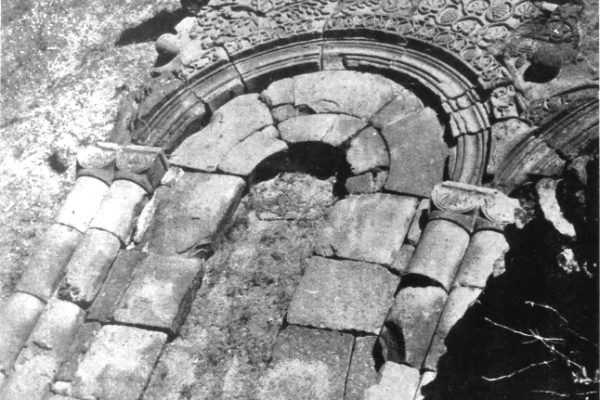
In contrast to other types of art, architecture tends to centralize within itself the collective image of nations and states. It is the only art where great human labor, technical skills and, ultimately, creative inspiration and the spirit of the nation are united. Zvartnots is the magnificent temple in which, the architectural culture and building art developed centuries before them, were brought together, where the genius Armenian architects were able to manifest all the grandeur of their ideas. Many historiographers admired its beauty and majesty. Particularly, in the work of Sebeos we encounter a laudatory response: “a temple worthy of divine honor”, in the work of Kaghankatvatsi – “an iridescent church”, at Asoghik – “cosmically amazing” terms.
The earliest evidence that has reached us from Zvartnots is the cuneiform inscription of the Urartian king Rusa II, where a significant volume of building activities, planting orchards and vineyards, as well as of laying a canal from the river and offering sacrifices are mentioned about.
The creation of the temple was connected with the cultural upsurge in Armenia: the creation of alphabet in the 5th c. AD, Dvin becoming a city of crafts and trade, the development of culture in the form of literature and the art of translation, which led to a universal cultural renaissance. However, on the other hand, during the construction of the temple, the political situation was tense – the Arab invasions and the ruling aspirations of Byzantium. It was during this difficult period that Nerses III was elected Catholicos, who had previously been a military commander and had been educated in Byzantium. Catholicos Nerses takes upon himself the responsibility not only to appease the tense situation, but also to engage in large-scale construction activities, in honor of which he received the nickname “Builder”.
The construction of the temple commenced in 641-643 and lasted until 652 AD. The literal translation of the name of the temple is “throng of angels”, which is related to the given location and the events that took place there. Sebeos mentions that King Trdat and Gregory the Illuminator once met here. It is for this reason that Nerses III chose this place as his residence. The consecration ceremony of the temple of the complex was attended by Constantine II, who, being greatly amazed by its beauty, wanted to build a similar temple in Constantinople.
Despite the fact that the temple has not been preserved to this day, persistent disputes and interest do not cease on its topic. In the 20th c., the first person who saved the temple from oblivion was Toros Toramanyan – the author of the reconstruction project of the temple. The ruins of the Catholicos palace and its residential parts are now located in the southwest of the temple. The palace consisted of two parts, which were connected by a corridor: in the western part there are ceremonial halls, and in the eastern part – structures of economic significance as well as a large winepress. Medieval Armenian historiographers Sebeos and Hovhannes Draskhanakerttsi evidence about the planting of orchards around Zvartnots Cathedral by Catholicos Nerses Tayetsi. The large-scale winepress was opened by the excavations of Toros Toromanian in 1931. It is a construction built in the 7th c. AD, with thick tuff walls and a rectangular plan, which consists of two segments and a long corridor between them. The total capacity of all the winepress baskets (“taqar” in Armenian) was about 22,000 liters.
According to the architectural reconstruction, the temple is a circular rotunda. In that period, cross-domed churches with a rectangular or quadrangular plan were common in Armenian medieval architecture. In the case of Zvartnots, instead of a square, the circle is chosen as the basis, the core of the composition is quadriconch, and the temple acts as an original experiment. The external appearance of the temple was surprising in its enormity, in the form of proportionally shrinking cylinders placed one on top of the other. Here, certainly, we come across with the well-known Armenian symbols: the grape vine, pomegranate fruits and plant-geometric bas-reliefs.
The individual parts of the vine branches carved on the external archivolts of the temple almost form full semicircles, and only at the intersections of the neighboring columns, they are interrupted and bend in different directions. Thus, a leaf is usually followed by a single-branched bunch of grapes, then comes another leaf and two-branched bunch of grapes. The clusters, without exception, hang from the top, and the leaves rise upwards from the inclined branches of the twig, and the details of the vines are worked out in such a way that none of them bear even a close resemblance to the design once already applied. At the intersection points of neighboring archivolts, massive stones are placed directly on the pillars. Here, the bas-reliefs on those stones are of high interest, which by their nature are a unique phenomenon in Armenian architecture and particularly in the decorative arts of the 5th-7th cc. AD. Only nine of the bas-reliefs (32 in number) have reached us. As a rule, in the bas-reliefs people are represented with construction tools in their hands. Among the tools, a pointed spade and two types of hammers with hooked and rectangular heads are depicted. According to Toros Toramanyan, these sculptured images present the bas-reliefs of workers, ecclesiastical and secular figures contemporaneous to the church building.
It is important to note that numerous Christian ideas have been appropriated by the Armenian culture with the help of the national worldview. In the material culture of medieval Armenia, sculptural compositions of grape vines and clusters, pomegranate bushes and bunches are of great importance. While preaching the ideas of Christianity, Armenian archimandrites extensively applied the system of folk world perception, where the role of the garden was exceptional. A wide field of expression of garden ideas was also created by a number of episodes of the New Testament – the Kingdom of Heaven as the vineyard, Christ as the true vine tree: “I am the true vine… I am the vine, you are the branches․․․”, wine as divine blood, righteous judgment as the spirit gathering and crushing the clusters in the divine winepress, God as the heavenly gardener.
Zvartnots has been discussed by all the researchers who on one occasion or another have referred to the history of Armenian architecture. This circumstance, of course, is not accidental, since becoming famous in the first half of the 20th c., Zvartnots attracted the attention of numerous scholars and found its rightful place in the history of both Armenian and world architecture.
[gallery ids="1908,1917,1914,1911"]
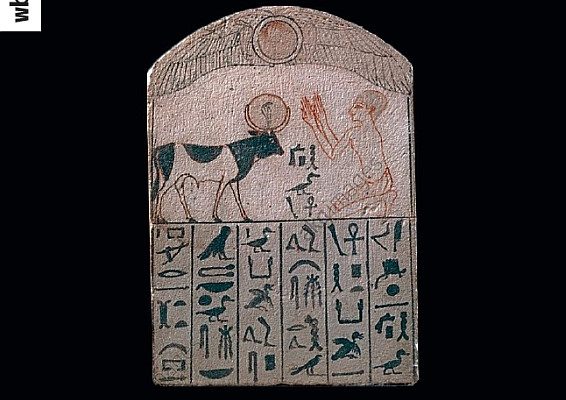
The article of Hayk Gyulamiryan, director of the Wine History Museum of Armenia, was published in the famous German scientific magazine Antike Welt.
The new article on Armenian winemaking was published in the magazine’s section “Museums of the World” and tells about the creation of the museum, the goals, activities and exhibitions.
“The idea to present the Armenian wine history, rich in centuries-old tradition of growing grapes and making wine in a comprehensive study, has matured over the years.
Various materials discovered in archeological sites, bibliographic data, and findings of ethnographic studies became the basis for creating the Museum of the history of winemaking in Armenia”: mentioned Hayk Gyulamiryan.
[gallery columns="4" ids="1796,1799,1802,1805"]Full Article : Antike Welt

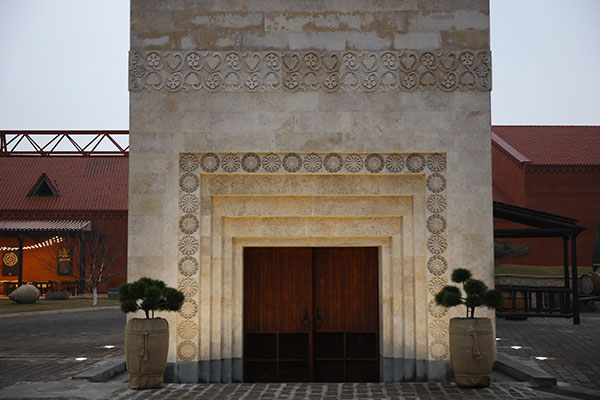
A new museum is delving into the history books of Armenia’s rich wine culture.
When you think of wine, there are always a few classic nations that spring to mind. Maybe it’s the lush valleys of France, the sumptuous vineyards of Italy, or a newer location like California or New Zealand.
But you’d be missing out on one of the oldest wine-making regions of the lot. With a history stretching back over 8,000 years, Armenia has wine-cred by the bottle-load.
[embed]https://www.youtube.com/watch?v=m9v8D7TCRFk[/embed]Some of the earliest evidence for today’s winemaking industry has been found from pieces of broken pottery that were discovered in the South Caucasus region, where neighbouring country Georgia now is.
A new Armenian wine museum is jumping headfirst into wine’s long history, and showing its deep connection to the religion and culture of the region.
Just 30 kilometres from Armenian capital Yerevan is the heart of the country’s winemaking territory. The museum here is built deep into the surrounding basalt rock and as you go underground, you feel as if you’re entering a giant wine cellar.
There you can find fragments of a myth revolving around the tipple.
Ancient wine history
Around 800 BC, King Menua, the fifth king of the ancient Urartu region supposedly gifted vineyards to a woman he was besotted with named Tariri.
The ancient myth can be seen on a stone inscription in the museum.
“We passed through a mysterious tunnel and ended up in the 9th century BC in the Urartian Chamber,” says chief specialist Narine Melikyan.
“From here, you see how our King Menua gives vineyards, which he himself planted by an artificial canal, which he himself built, and now he gives these vineyards to this mysterious, beautiful woman, whose name is Tariri.”
A wine cask to die for
Other ancient exhibits show how wine would accompany Armenians from cradle to grave.
A wine jug dated back to the 1st century BC was discovered by archaeologists to have the remains of a woman in it.
Upon further research, the jug – called a karas – was found to be an integral part of an ancient Armenian’s lifetime.
“When a person was born, there was a karas intended for him, during his lifetime, it was used to age wine. And after death, a person was buried in the karas, in the foetal position.”
Wine has long held connections with religion. Jesus’s first miracle after all, was converting water to wine, and the museum has centuries-old Armenian bibles to demonstrate that.
The museum also holds phallic-shaped stones, which were idols in ancient times. During rituals, ancient Armenians poured wine over the idols as a sacrifice to higher powers.
In 2011, a 6,000-year-old Copper Age wine factory was discovered in southern Armenia. And the 8,000-year-old broken bits of pottery found to the north in Georgia are thought to be the earliest known evidence for the origins of today’s winemaking industry.
Source: www.euronews.com


The Armenian Highlands have been a prominent center of agriculture since ancient times, where viticulture and winemaking have been among the leading branches of the economy since at least the middle of the 2nd millennium BC. Cuneiform inscriptions of the Kingdom of Van contain references to the establishment of gardens, fencing, construction of cellars, and other economic buildings. In the Hellenistic and pre-Christian period, writing is somewhat replaced by iconography, when the garden-grape scene or simply the vine (fig. 1) begins to spread in the decoration of temple and palace complexes, which later becomes one of the main decorative elements of Christian art, which is expressed mostly in the composition of khachkars in the form of both vines and jugs symbolizing wine (fig. 2-7).
In the Middle Ages, the vineyards were called gardens, and the mention of their purchase and donation to monasteries is evidenced in lithographs from the 9th-10th centuries. Winemaking was also an integral part of gardening. Dry wine often referred to as “cup” in lithographs, is still used in church rites as a symbol of the blood of Christ.
The lithographs show that the gardens could be donated to the monasteries both in full or partially, that is, part of the garden. In addition, the monastery had the authority to manage the crop or income of the garden. For example, according to a 1301 donation from St. Astvatsatsin Church in Goshavank, a hundred jugs of wine from the garden were donated to the monastery. One of the lithographs of 1275 in the lobby of the Sanahin bookstore of the monastery is similar, according to which priest Vardan bought a garden for 375 silver drams and donated it to the monastery’s guest house. Interestingly, at the end of the lithography, the donor addresses the well-known curse-blessing formula, cursing not only those who alienate the garden from the guest house but also those who disrupt the wine (winemaking).
The information about winemaking in the lithographs is supplemented by evidence of the construction and donation of hndzans (wineries). Thus, According to a khachkar lithograph erected near Noravank monastery, the religious Arakel and his brother Khotsadegh bought a garden with their means, cultivated it, then built a hndzan and in celebration of the work done and the preservation of the harvest (in this case, also wine) they erected a khachkar.
The existence of hndzans in medieval monasteries testifies to the ritual significance of wine in church rites. It can be said that the sacrament of Holy Communion, which is distributed to the faithful at the end of the liturgy, is useless without wine. One of the earliest references to the use of a “cup” of wine in churches is preserved on the lintel of the northern entrance of the church of S. Astvatsatsin in Amberd (Fig. 8, 9). According to the lithograph dated 1026, after the construction of the church, Prince Vahram Pahlavuni determines the amount of the “fruit” tax given to the monasteries- the house for Nig province is two grains of wheat, from Aragatsotn province – two pots (about 10-11 liters) of wine, and from Qaghakudasht, that is, Vagharshapat – ten liters of cotton. The lithograph is the best evidence of the development of grain cultivation, winemaking, and cotton growing in the mentioned places during that period.
In the 1036 lithograph of the Church of the Savior in Ani, the capital of Bagratuni Armenia, Catholicos Petros Getadardz (1019-1058) donated several proceeds to the church ministers and donated a “cup” of wine to Ablgharib Pahlavuni, who initiated the construction of the church. Later, we read about the donation of thirty pas (about 150 liters) of cups in the 1308 lithograph of St. Astvatsatsin Church in Nerkin Ulgyugh village, Vayots Dzor, and according to the 1325 lithograph of the Karmravor St. Astvatsatsin Church in Ashtarak, a garden was donated to the church, the users of which should give a “cup” of wine.
Our recent lithographic research has revealed that “cup” of wine had a special significance in the church rite in the 18th century, the best pairs of which are preserved in the lithographs of St. Hripsime Monastery (Pics. 10, 11). According to a lithograph dated 1728, a certain Gaspar son of Babel donated to the monastery a hundred jars of cups, including grapes, which after processing would be used as a “cup” of wine. According to another countless lithograph of the same monastery, Simon of Dzoragegh and his grandchildren, Eliazar and Vardan, donated a jar to St. Hripsime Monastery. It should be noted that Anania Shirakatsi set 126 cups of wine for the weight of one jar, and one cup weighs about 5.5 kg.
In almost all of the above examples, wine was donated to the monasteries to be served and mentioned by name by the ministers of the church during various religious holidays. Donors followed the well-known template formulas for writing lithographs characteristic of donation letters, ensuring the integrity of their donated property and the promised liturgy.
Arsen Harutyunyan
PHD, Senior Researcher at the IAE
[gallery columns="4" ids="355,356,354,352,353,351,349,350,348,346,347"]
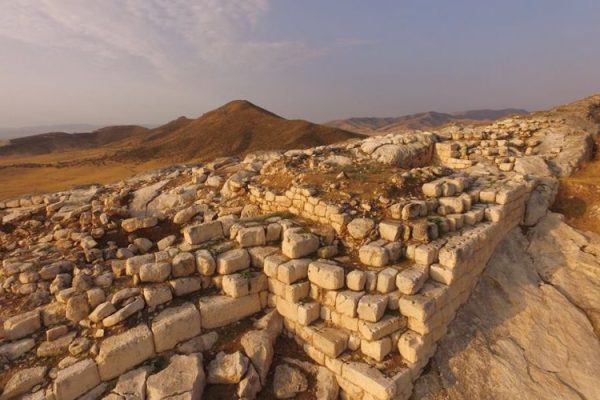
The ceramics of the Classical period of Tigranakert (1st century BC-3rd century AD), represented by the richest collection of archaeological material discovered during a decade and a half of excavations, is important source for studying the material and spiritual culture of that period.
Besides rich diversity of shapes it has another important peculiarity: it is presented by luxurious painted pottery, black and gray ware, polished, and decorated by stamped and incised ornaments. Among this diversity there is a small but unique group of stamped vessels that can shed light on cultural innovations of Tigranakert, trade and cultural connections, and the cultural role it played in the region.
Exceptional examples of stamped pottery revealed from the excavations of Tigranakert carried out in different years are black polished, shining goblets, phialas, and fragments of bowls externally decorated with embossed grape clusters forming bands (fig.1). This ceramics is called “cluster-bearing vessels”, meaning that these decorations due to the conical, stamped designs with sharp bottoms and small circles inside are most probably representations of grape clusters.
An analysis of over thirty examples of cluster-bearing vessels reveal that the craftsmen of that period utilized at least nine stampers in order to create the conical clusters that contain from three to eleven grapes that are arranged in different ways (for example, in the case of six or eight circles).
However, despite the diverse samples noted above, there have been no pottery stampers discovered. It is possible to picture what they looked like based on their depiction at the famous sites of the Classical period in the West (fig.2). In order to be utilized comfortably, the stampers had long handles, which sometimes had one or two carved usable ends. The stamped designs were made while the clay was still in a moist, soft state.
Horizontal bands are seen 1.5-2 cm below the rim on the inner side of the black polished vessels of Tigranakert around the perimeter of the vessel and 1.5 cm apart, with the stamped clusters between them running horizontally and equidistantly all the way around. Sometimes two rows of cluster-bearing rows can be found in the same vessel.
During the excavations of the first urban quarter of Classical period carried out in 2013 a complete goblet was found, where the cluster-bearing row is located near the base of the vessel (fig.3). The belt, Almost 5 cm wide belt, formed between its concentric line 2.5 cm below the edge, is decorated with incised triangles.
Moreover, the ornament obtained by the symmetrical repeating pattern of one or more triangles embedded in the horizontal lines is one of the most widely used ornaments on painted pottery, was popular among the masters of Tigranakert. Sometimes two rows of cluster decorations can be found on the same vessel. In these cases, the first row is located very close to the rim of the vessel, like as on the phialas (Figure 1/3). The second cluster-bearing row is located near the base of the vessel, underlining the bottom. In some samples, the lip of the vessel is underlined with a gently carved stripe. There are also examples with the lip decorated with a grove line. Generally, the clusters are stamped into a straight band, but there are some vessels where the band near the lip is stamped in a staggered way in two lines (fig.4).
These cluster-bearing vessels were created in the unity of the shape, practical significance, and the ornament. According to the studies of the material, only the open vessels were stamped by grape cluster decorations and were intended for drinking liquid / wine. Goblets and phialas bearing cluster decorations confirm the proposition that winemaking was quite developed in Tigranakert of the Classical period. That is also approved by a rock-cut wine-press presented by a polygonal platform and a pit, discovered at the eastern foot of the fortified quarter of Tigranakert in 2012, as well as hundreds of fragments of wine vessels, painted amphorae, and goblets.
An elegant pendant made of blue glass in a shape of grape cluster found from the first urban quarter of the Classical period, as well as the archaeobotanical analyzes of carbonized grape seeds (Vitis vinifera) samples give an idea that at least two types of grapes were cultivated for technical and table purposes in Tigranakert of the Classical period.
The elegant performance of the whole composition of cluster-bearing vessels of Tigranakert, those black polished surface, which tends to leave the impression of varnishing, gives these vessels a special beauty, and provides ground to suppose that they were used for a special purpose.
Armine Gabrielyan
PHD, Institute of Archaeology and Ethnography National Academy of Sciences Republic of Armenia
[gallery columns="4" size="large" ids="752,743,749,746"]
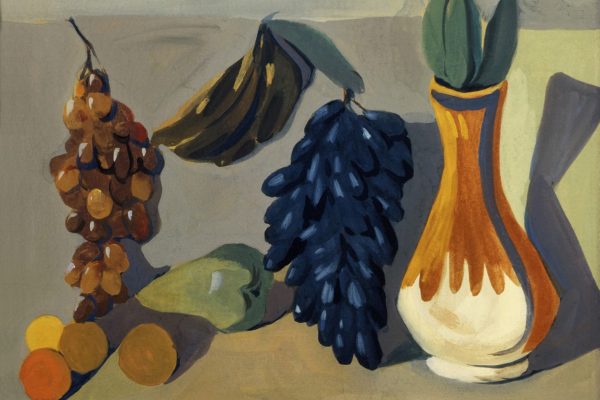
Wine is one of the most mysterious drinks in the history of mankind, with numerous useful properties, mixed with dramas and wars, religion and politics. Why does this ordinary drink so popular since ancient times, and why that is it received attention not only privileged class, but also creative individuals – writers and painters. This many-sorted and fragrant drink has a centuries-old history, which is not equipped with just dry dates, but also specific symbolism and pictorial canvases. Usually wine embraces the beautiful theme for philosophical reflection. From the one side, its usage could temporarily rid of earthborn concerns, give a bouquet of pleasant peace, but on the other hand, excessive drinking caused for inadequate state, where reality is fusing with fantasy, which is called “drunkenness” in ordinary language. This drink, which was allowed to be used only by the nobility in those days, seemed to be a kind of “elaborate”, intangible test to test their sense of proportion. Another feature: excessive use seems to “untie the tongue”, which led the Greeks to a wise thought: “truth is in wine”. Where the human mind controls and resists the full expression of its thoughts in every possible way, there wine acts as a magical drink of truth, in the process of using which both slyness and hypocrisy and a tendency to lie disappear.
Wine and winemaking occupy a key place especially in Armenian culture. Wine is not just a drink for them as a way of feeling tranquility, but a sacred drink, which history goes back to the Christian tradition. As is known to all, the first grapevine was planted by Noah. The symbolic interpretation of this event meant a divine reward for patience and faith. In the biblical context, wine crystallizes the divine gift to humanity. Because Noah’s ark landed to Ararat, this event gives reason to assume that Armenia is the birthplace of wine, so this mountain is not only sacred in the Bible, but is also a symbol of Armenia. On this basis, the attitude of Armenians towards wine is quite respectful. It manifests itself in pictorial art by the form of various motifs and subjects. Especially the southern bright coloration contributes to the expressive conveying of the gifts of nature, especially grapes. Armenian masters, with their rich palette, feature the exciting process of grape harvesting, admiring its juiciness. For example, in the works of Martiros Saryan and Minas Avetisyan, whose canvases transfer the colorful expanses of Armenia, can be found still-lifes with grapes.
All of the still lifes of Martiros Saryan embody only the one simple idea – pulsating, immortal life. But unlike other still lifes, here the coloring is more laconic. However Saryan was succeed to show the ripeness of fruits in the frame of limited palette. The sunlight falls on them, intensifying the feeling of freshness and naturalness. About composition, black grapes occupy a central place, which color makes them more massive and ripe. And the rest of the attributes have only a service character, bringing into balance the composition – both in terms of color and composition. This still life is included in the middle period of the maestro’s oeuvre, when he had already become acquainted with Fauvism and that was the style in what he found a way to reproduce his southern temperament. These are strong contrasts, correctly chosen color ratio and light composition.
If in Saryan’s paintings everything is submitting to harmony and balance, then in Minas’ works everything is the opposite –that is expression, shining temperament dominates the line and composition. If Saryan’s still life is a transfer of calmness, peace, it is a hymn to life, then Minas’ work is the extent of intense thoughts and emotions. Unlike Saryan’s still lifes, Minas’ brush works briefly and expressively. On his canvas there is no place for Saryan’s calmness, here is only contrasts. Added to this is pastosity, which makes the painting truly pulsating, despite of the staticness of the figures. If in the case of Saryan, the still life emphasized generosity of the nature, Minas doesn’t put on task of this type. He is much more engaged with the juxtaposition of bright red, navy blue and yellow-green. It’s a battle of inconsistent colours.Saryan’s still life is more static, calm, which corresponds to his life’s philosophy. What is about Mina’s still life, here both color and composition are subject to the dynamic.
The wonderful draftsman B. Kolozyan is also extremely attentive to nature and its gifts, like Saryan, but unlike him, his works literally abound in fruits, as if the canvas limits them, preventing them from conveying all the generosity and richness of nature. In his still life, the artist contrasts the black and blue colors of grapes with the whiteness of a sheet, creating the illusion of infinity and unlimited space. Here everything flows in all directions, and in a modest plate there is not even a hope that the grapes will fit.
[gallery columns="4" ids="406,407,408"]
 +374 44 60 22 22
+374 44 60 22 22 [email protected]
[email protected] Armenia Wine Company 3 Bild., 1Dead-end, 30 Street, Sasunik 0223
Armenia Wine Company 3 Bild., 1Dead-end, 30 Street, Sasunik 0223

